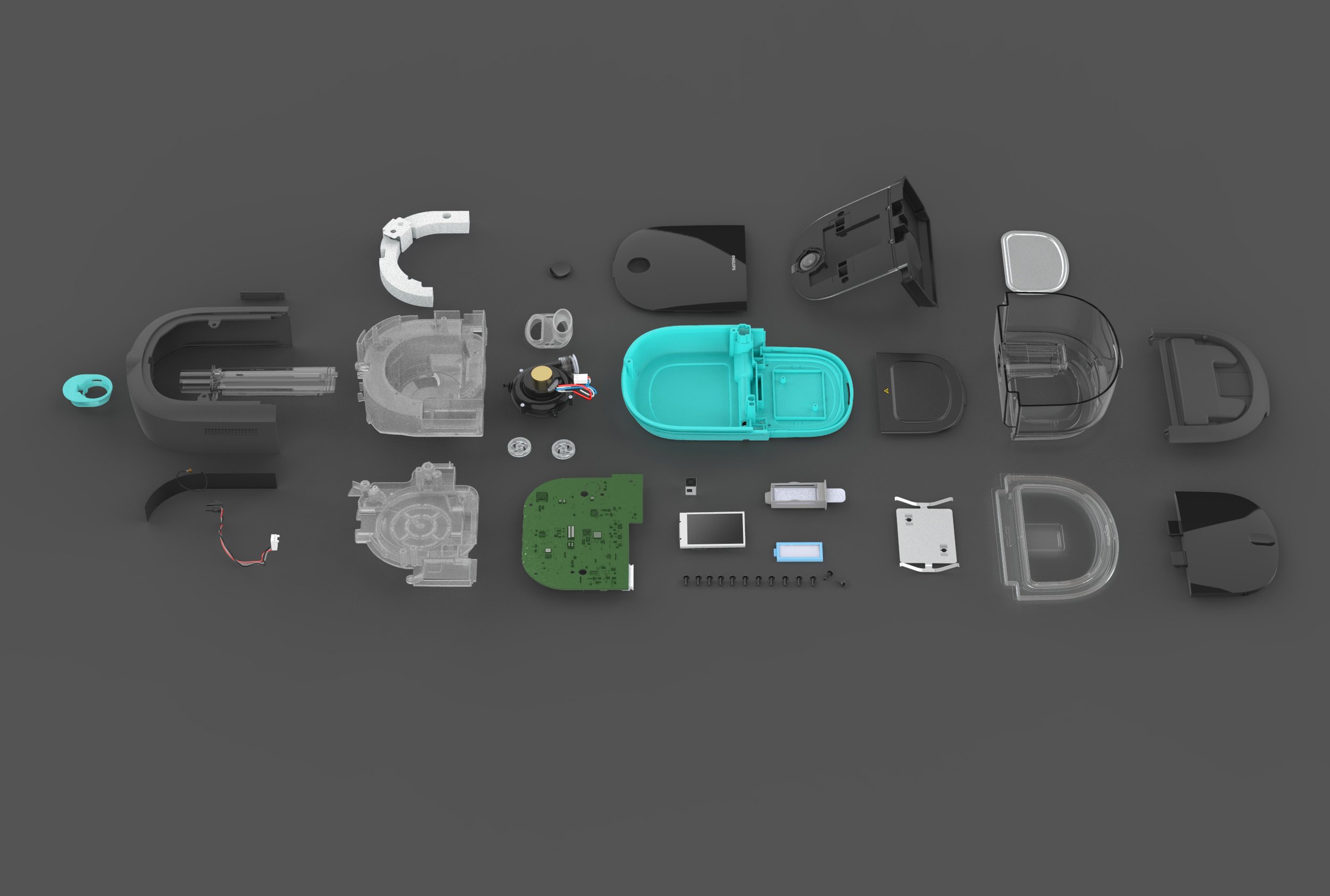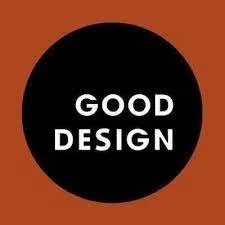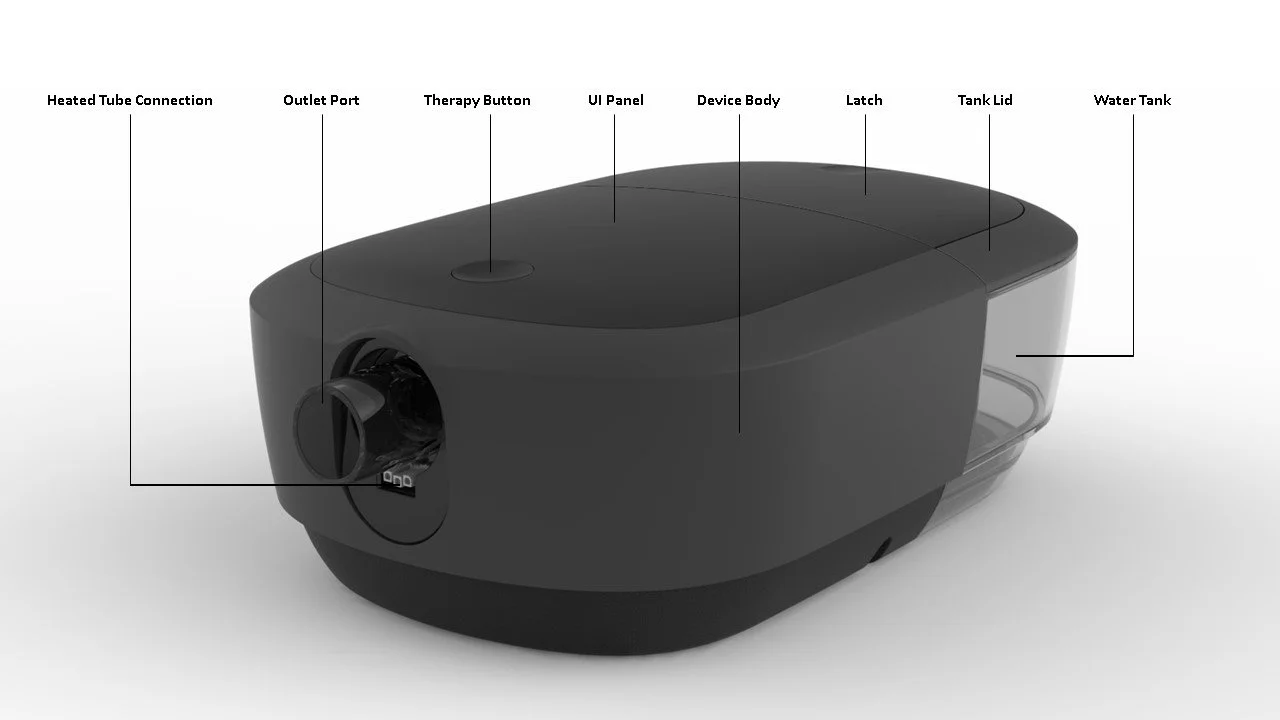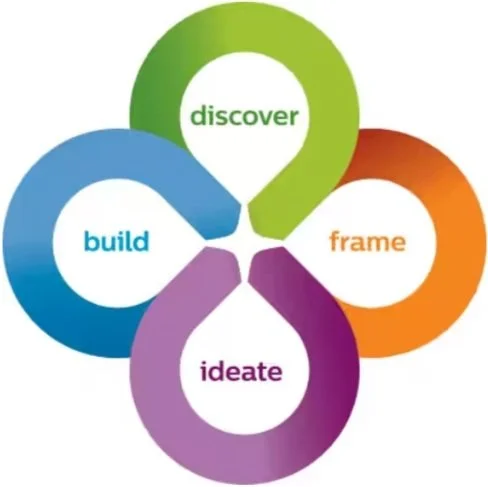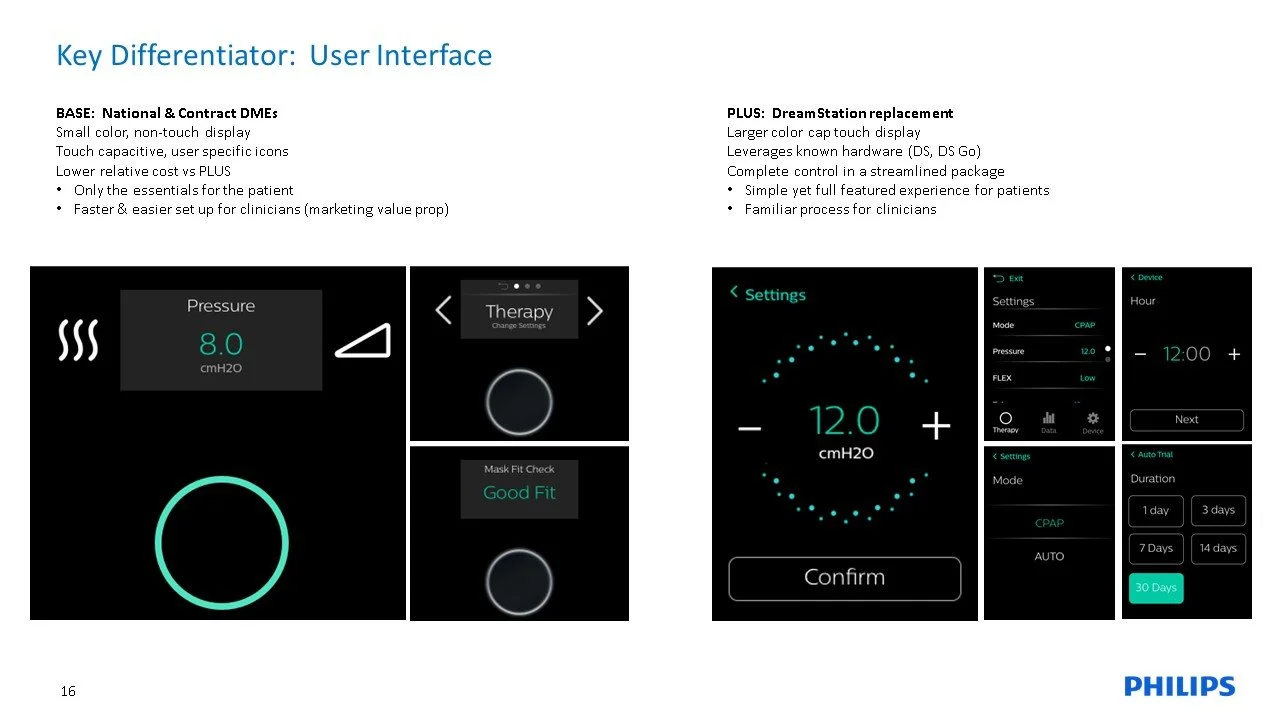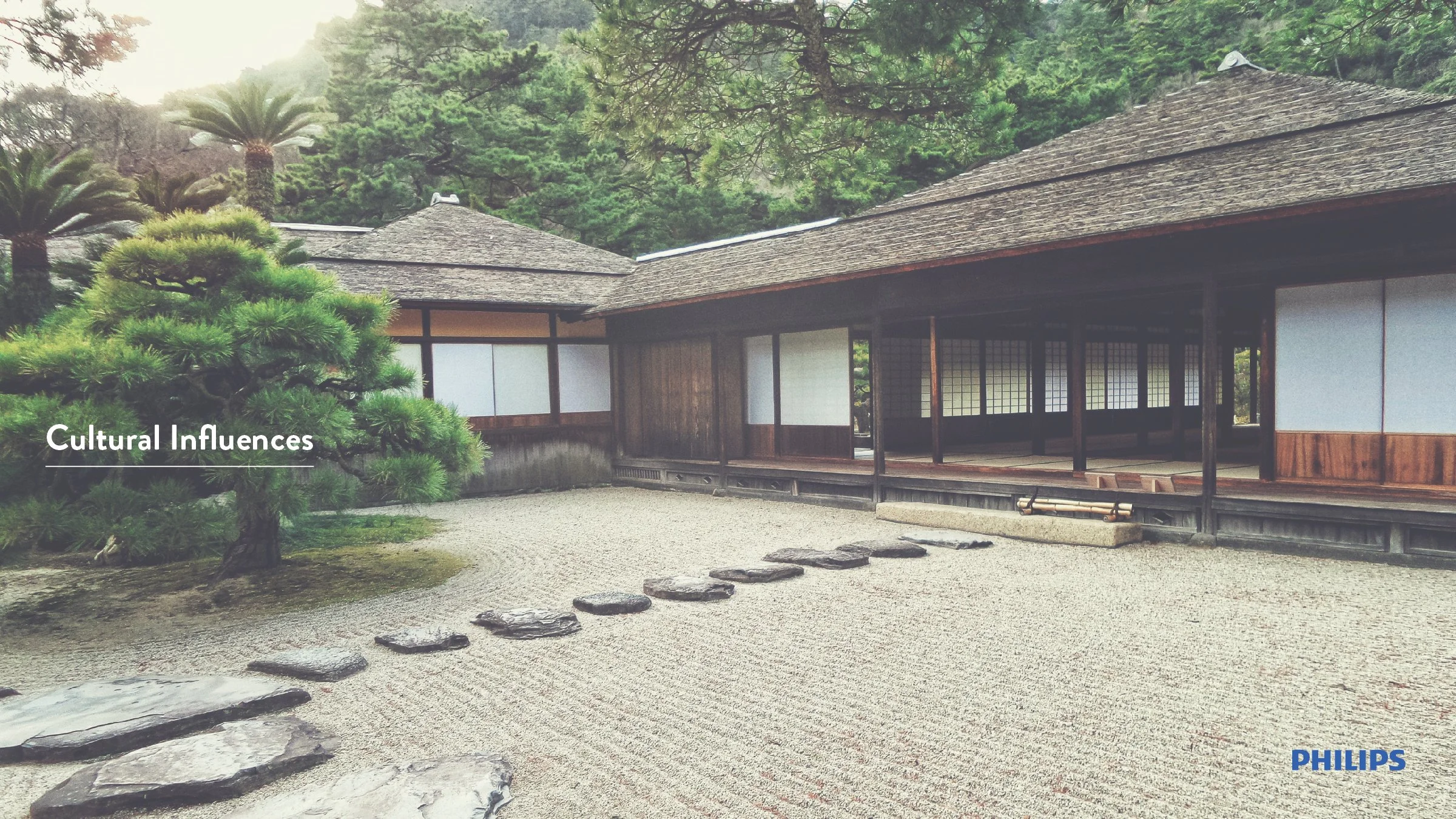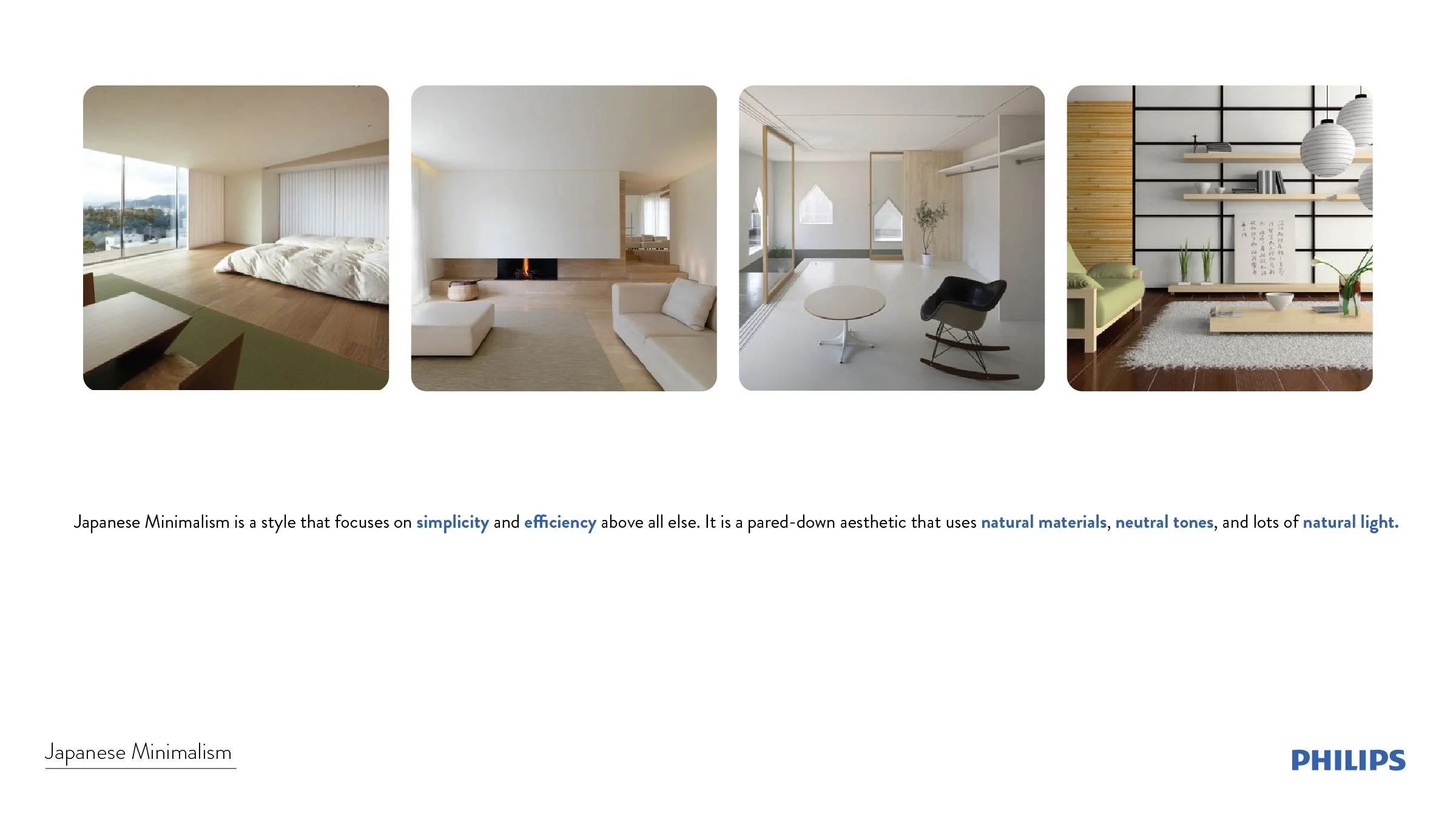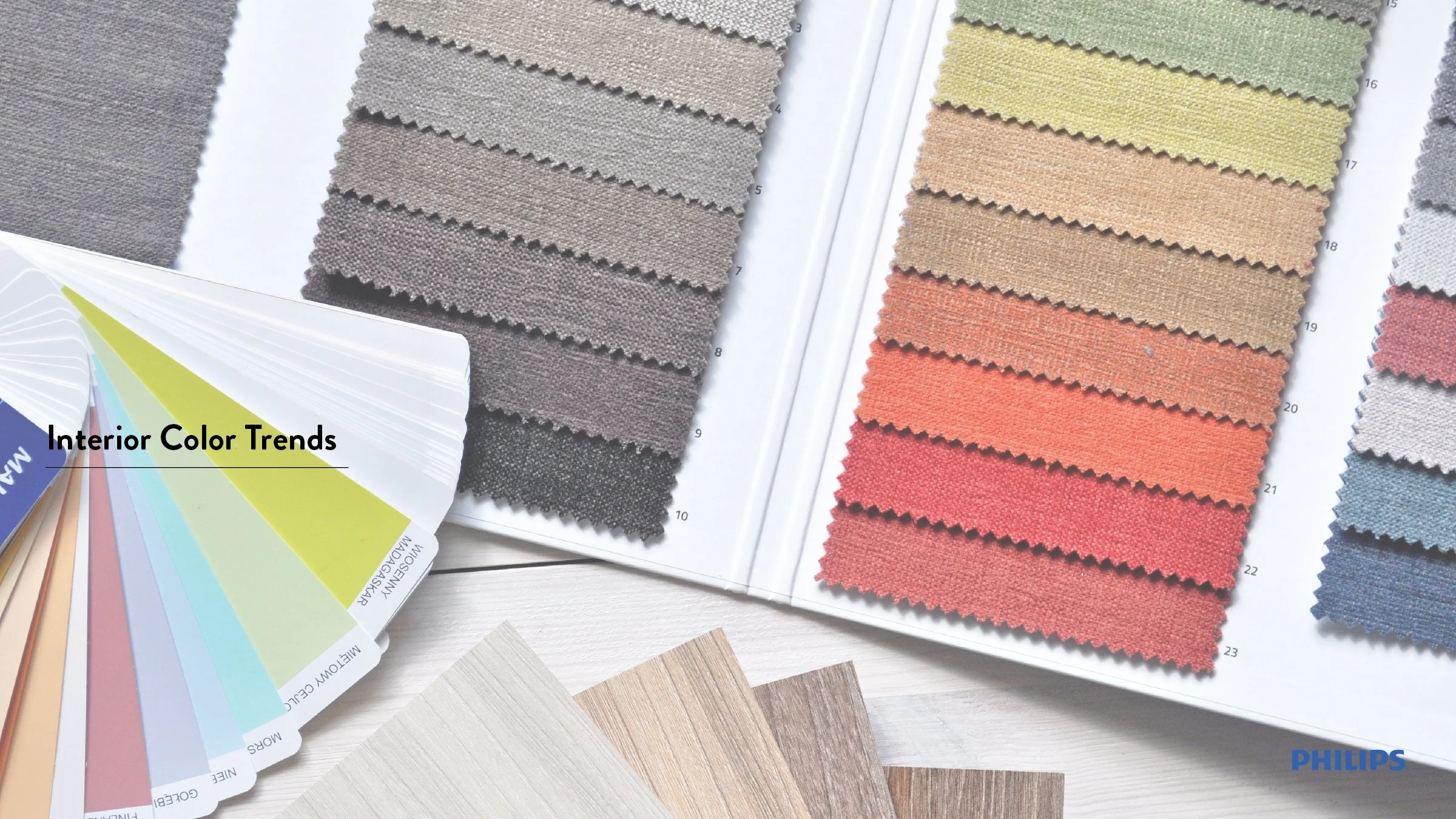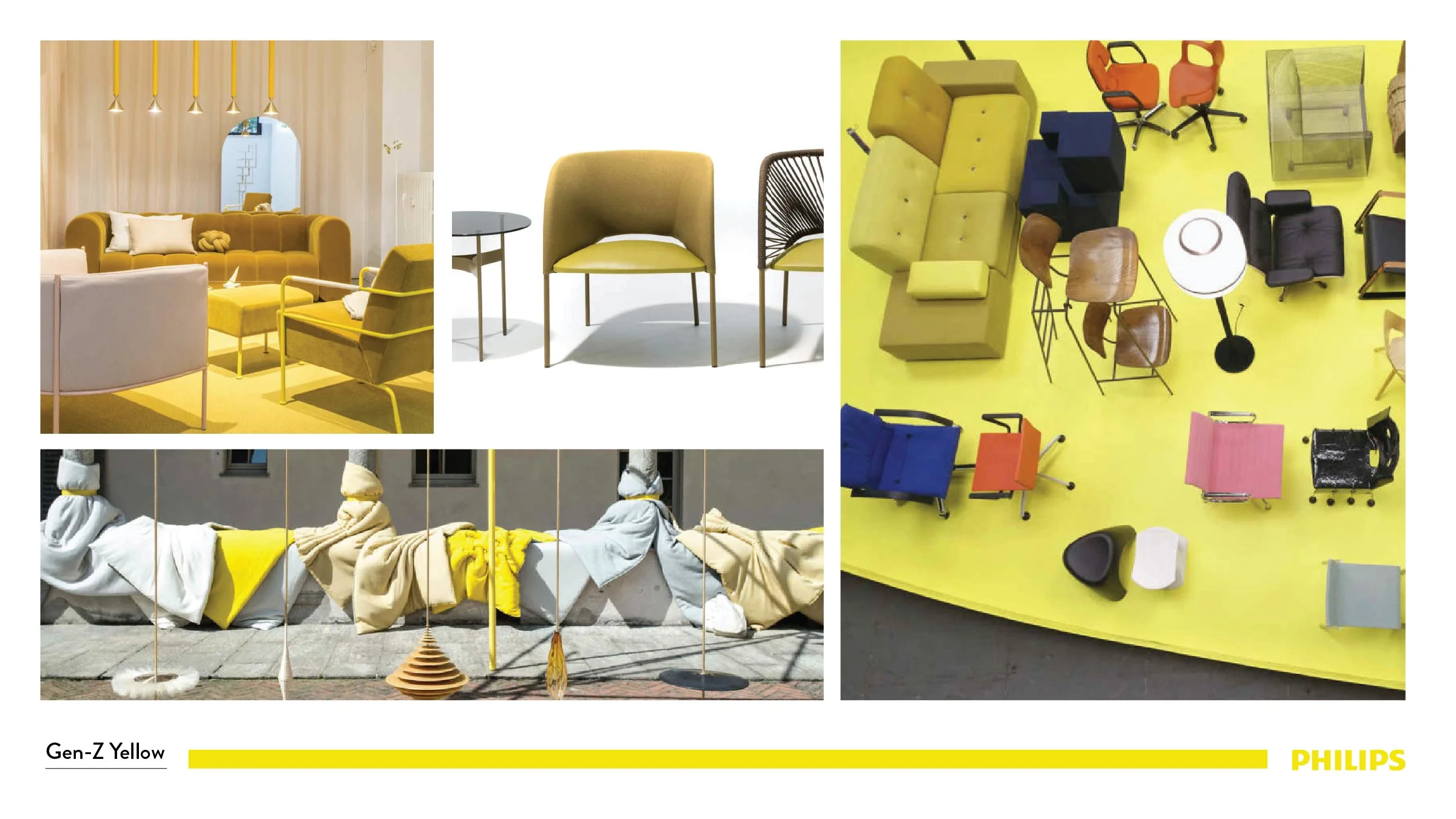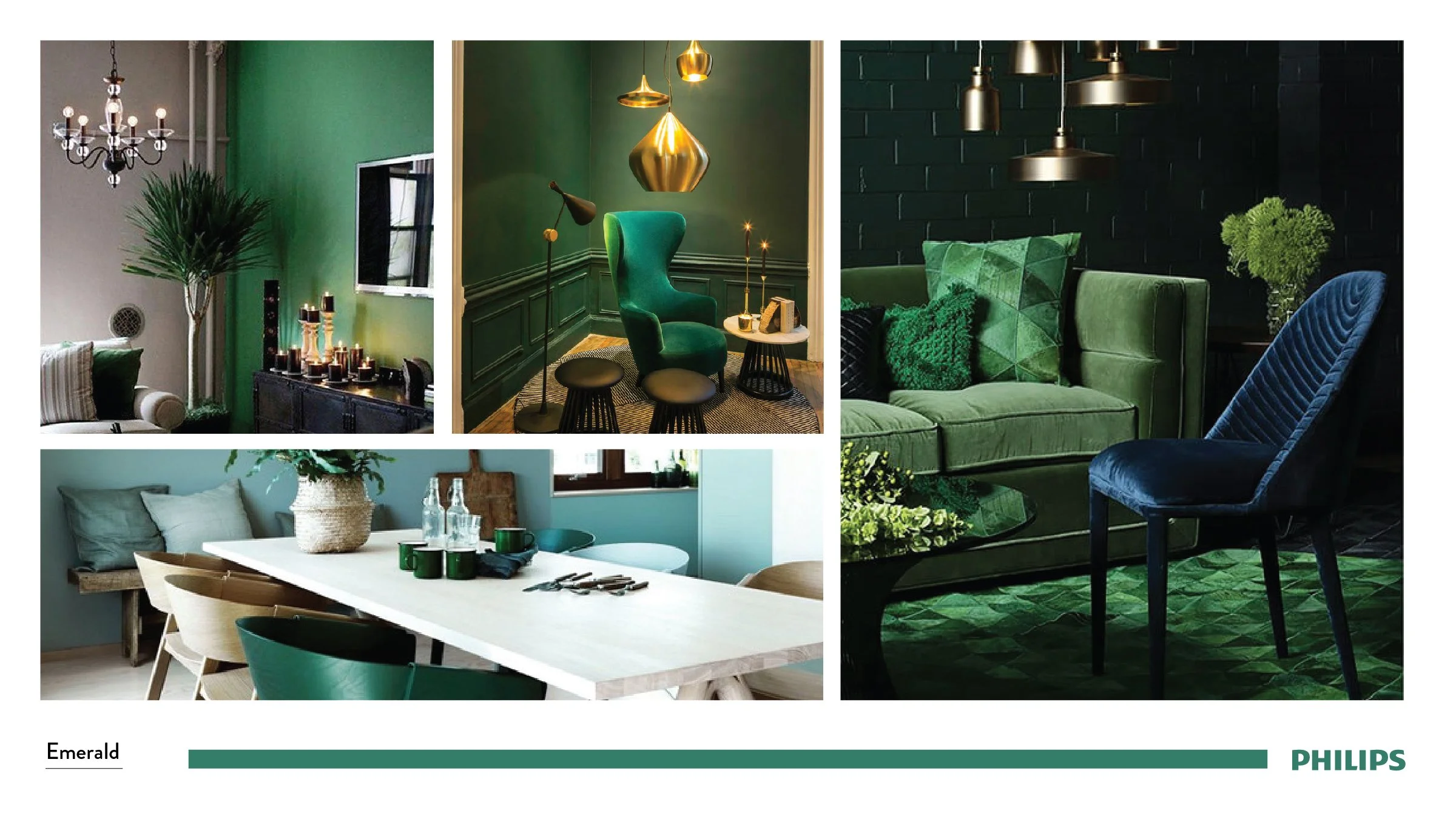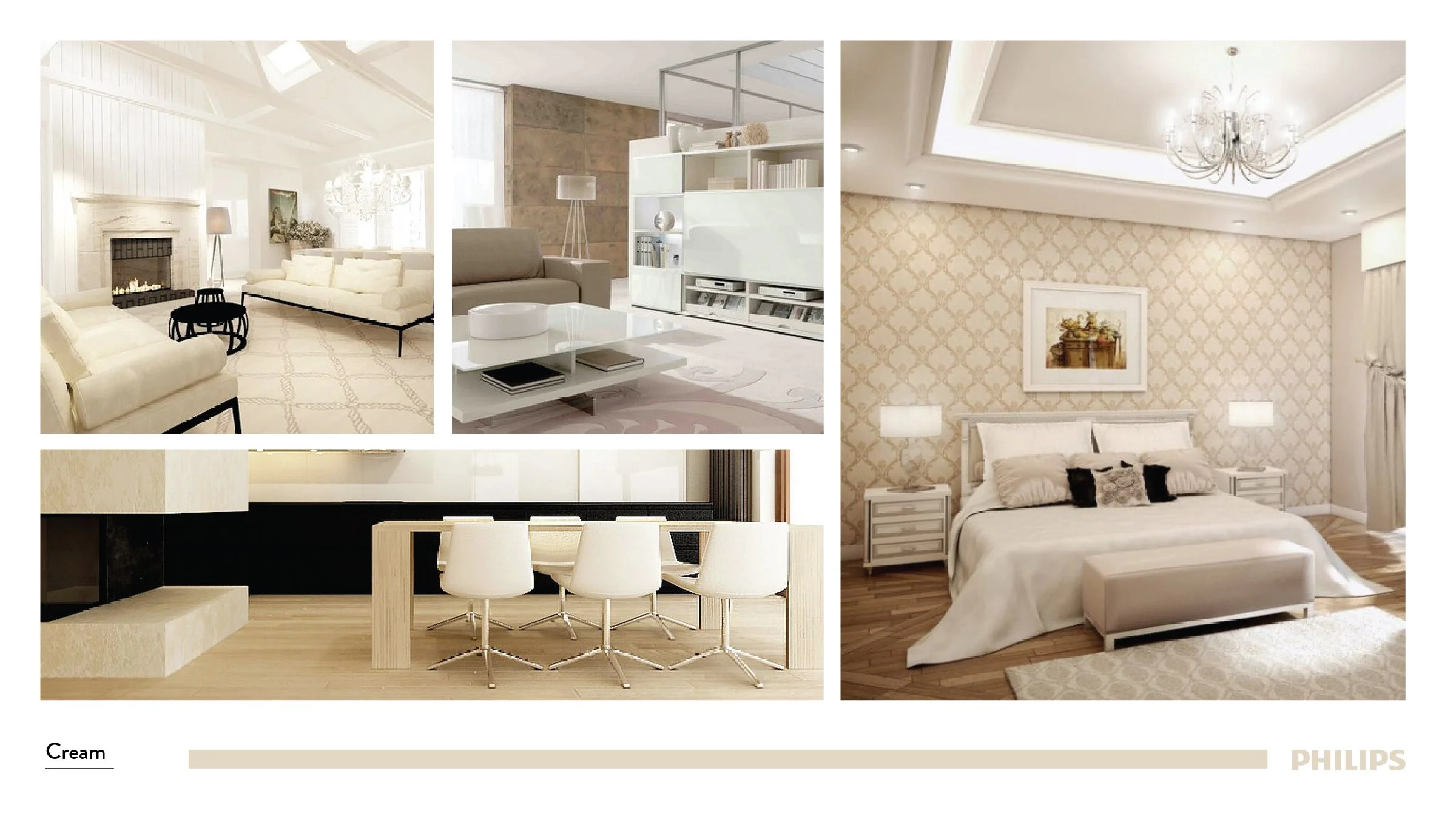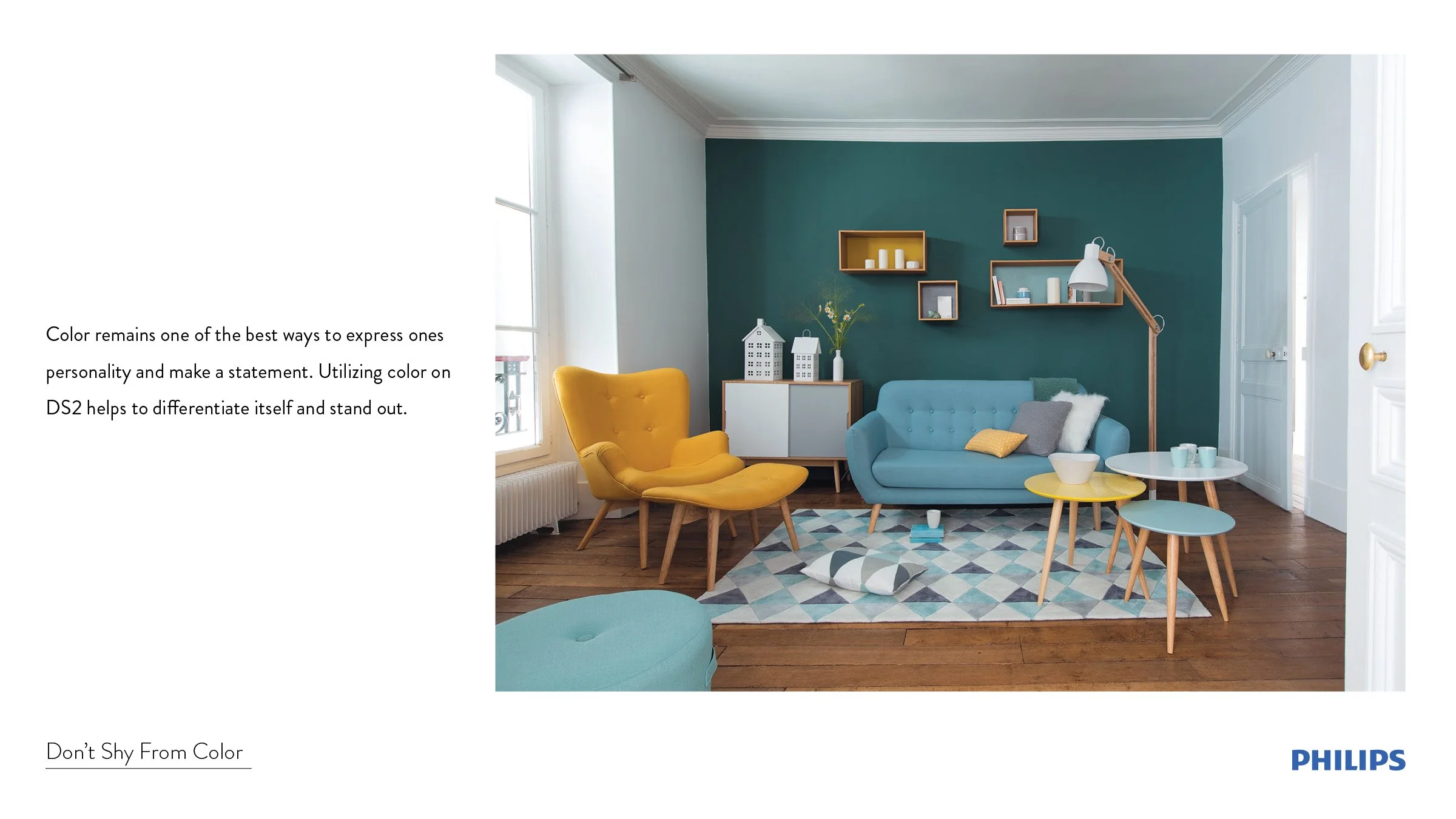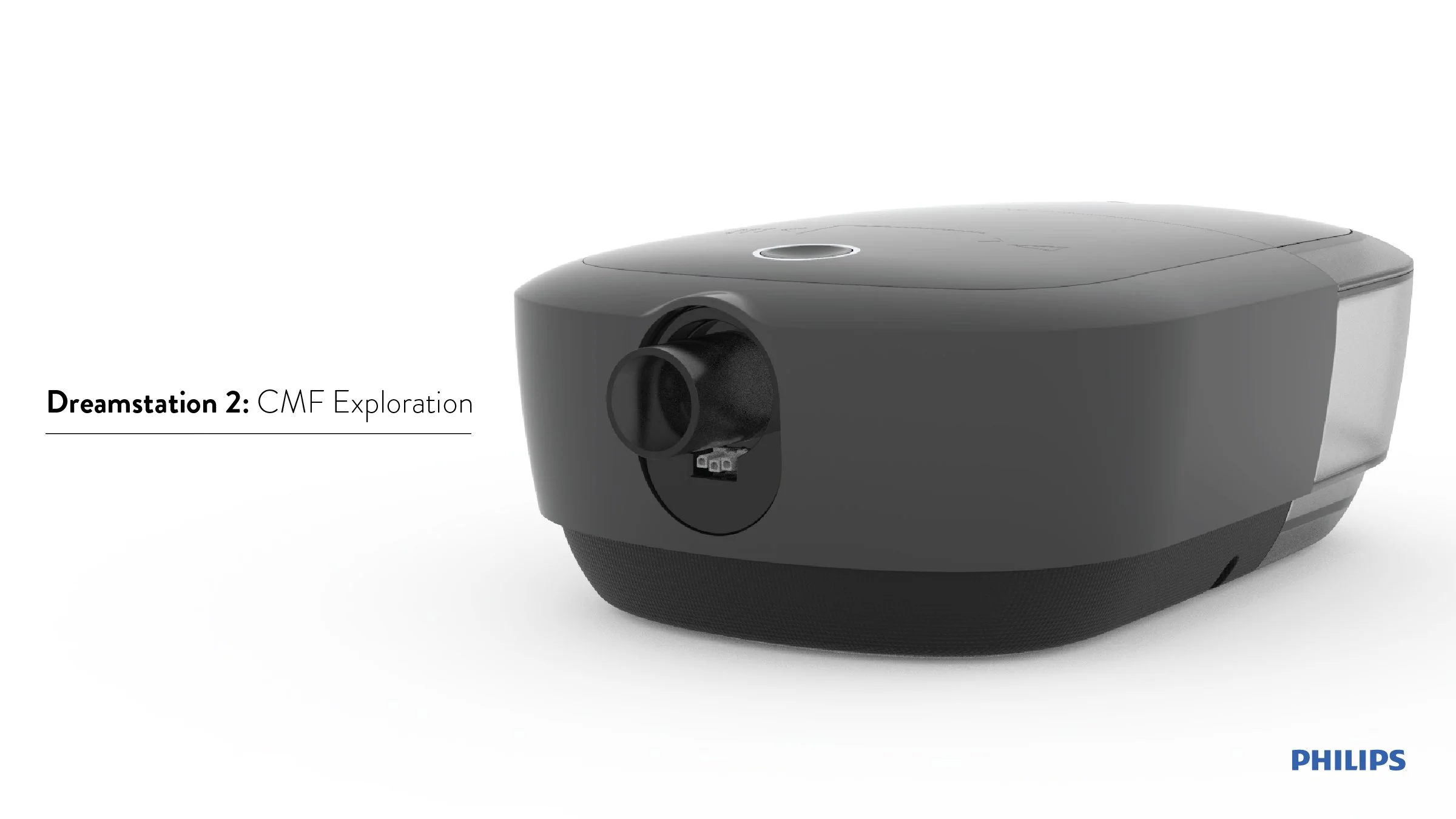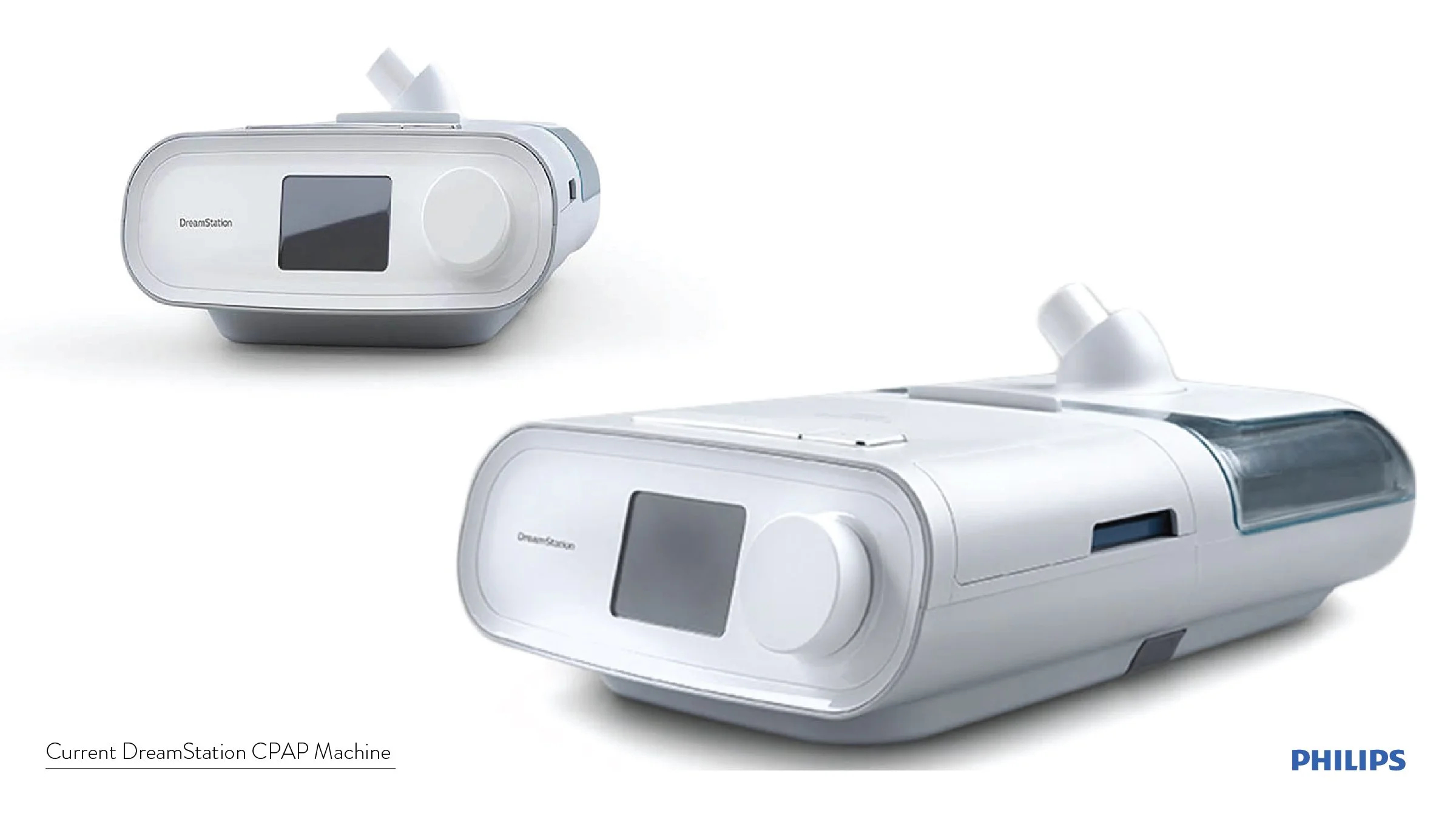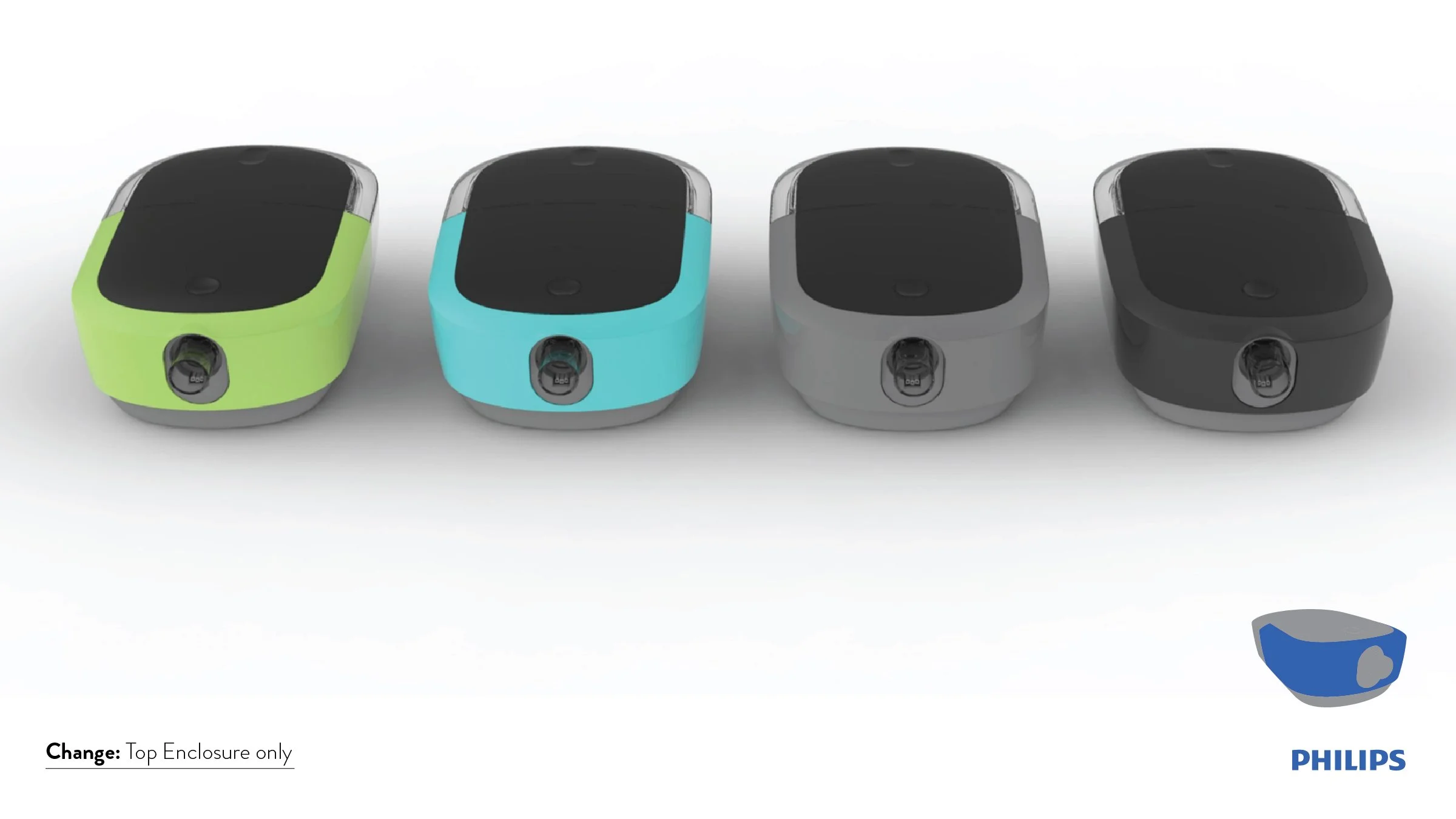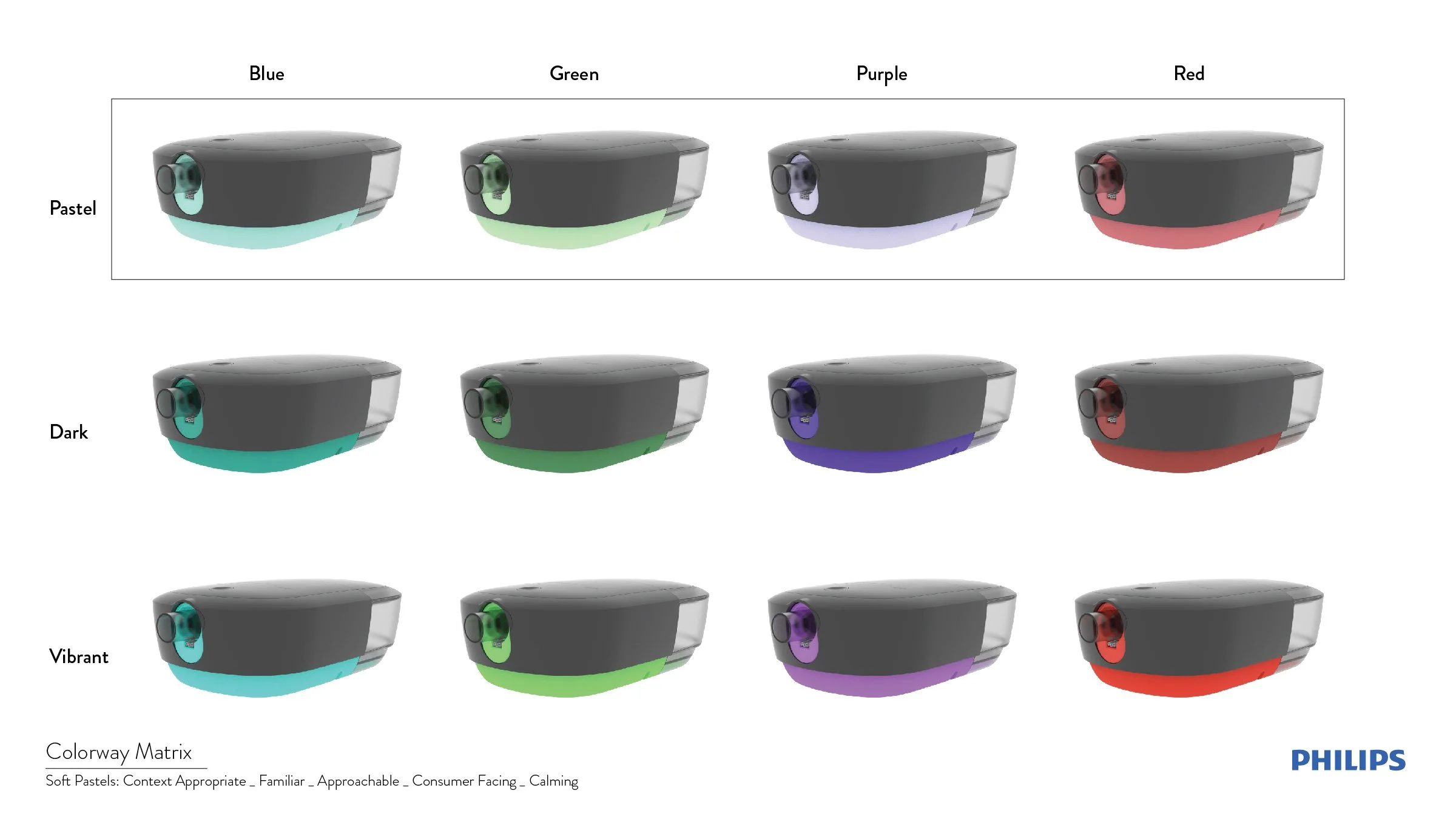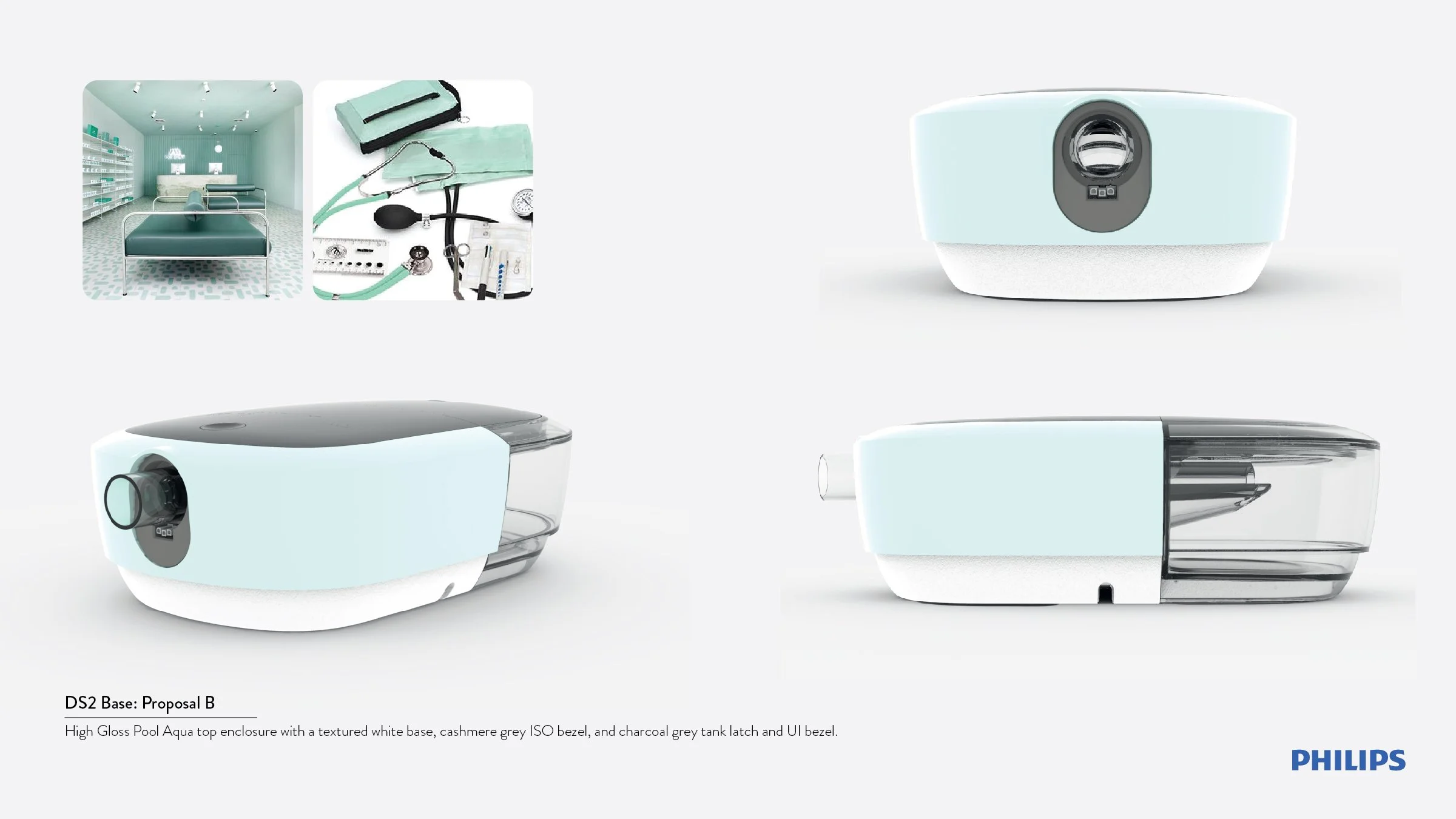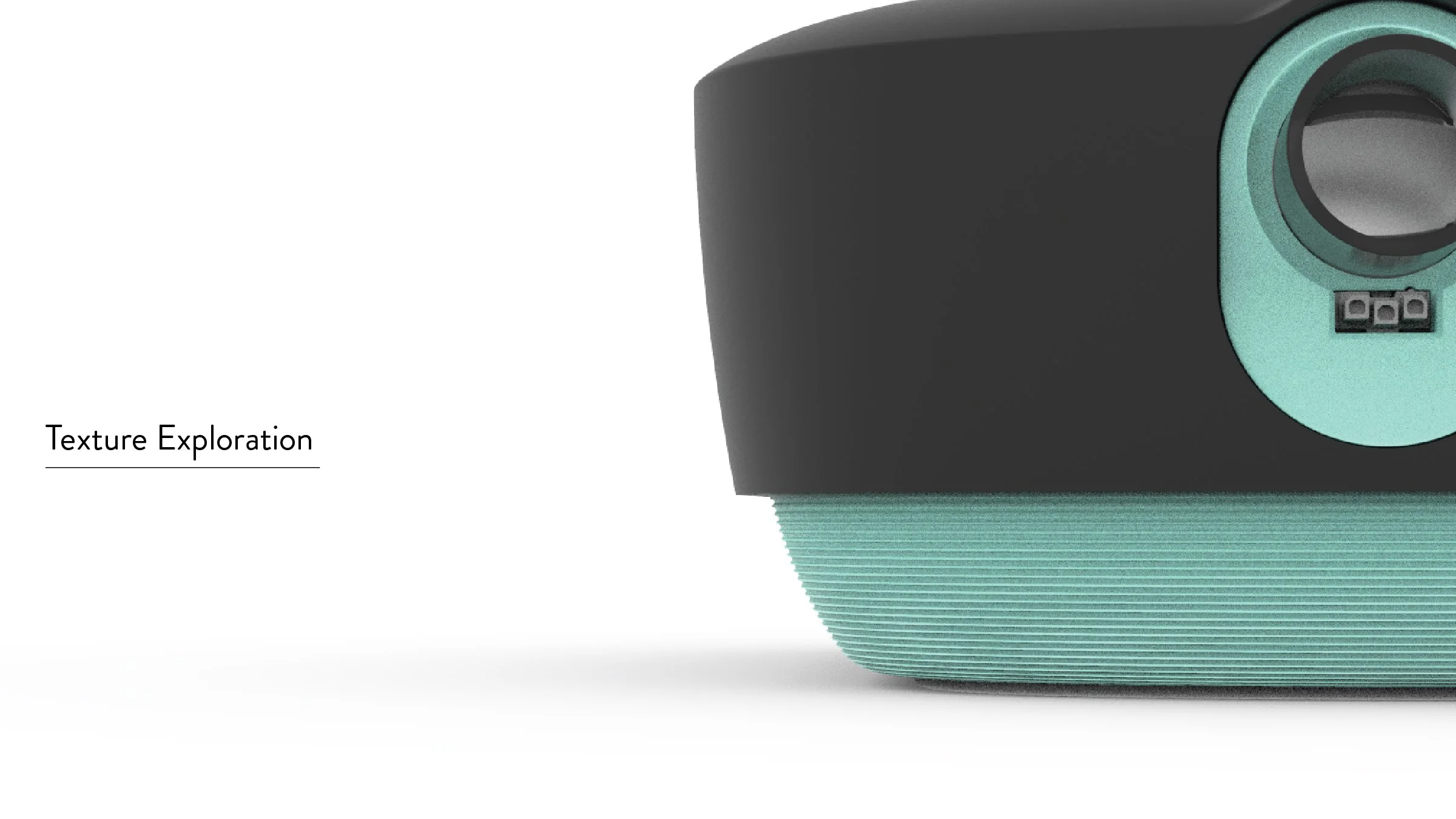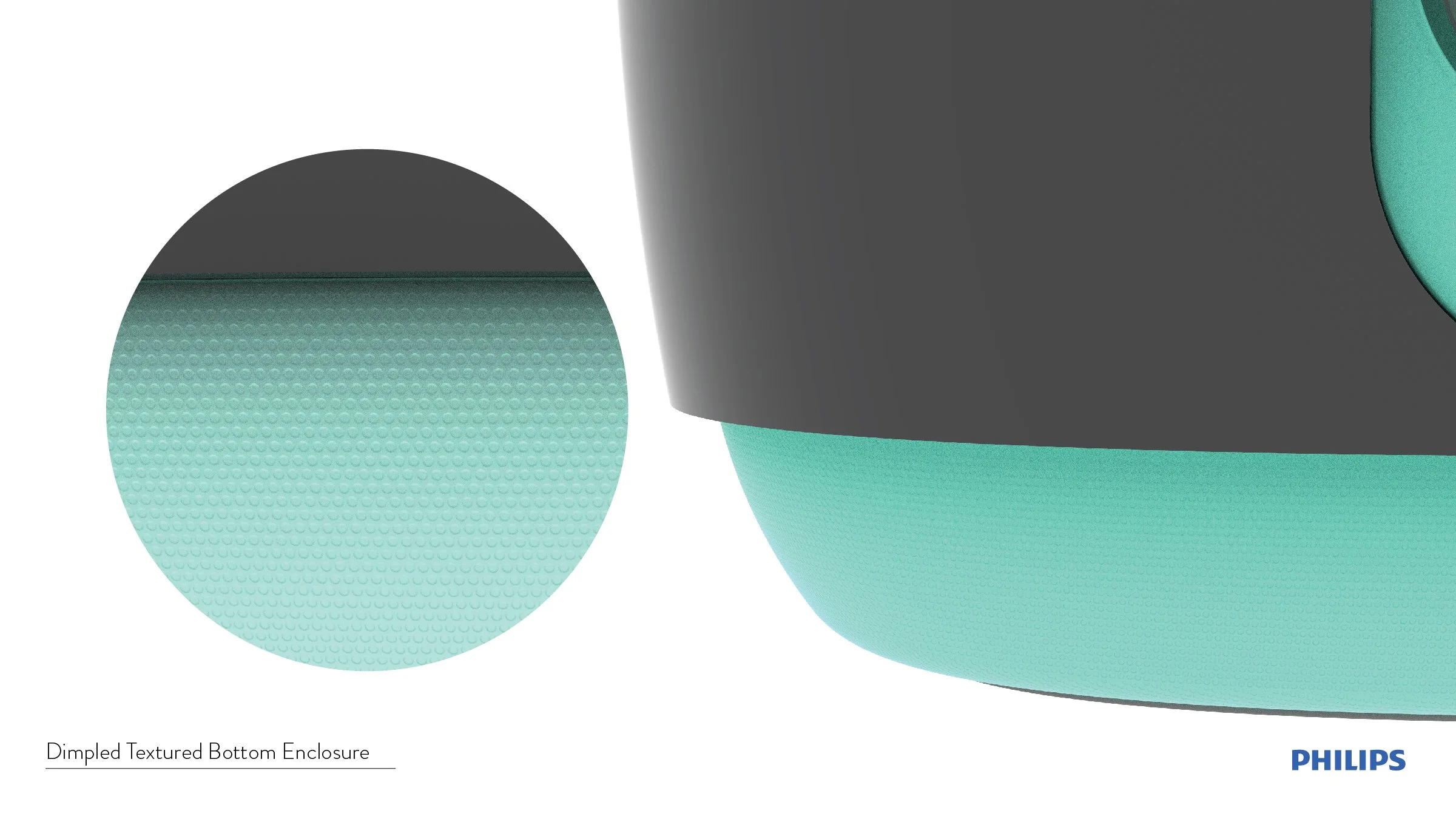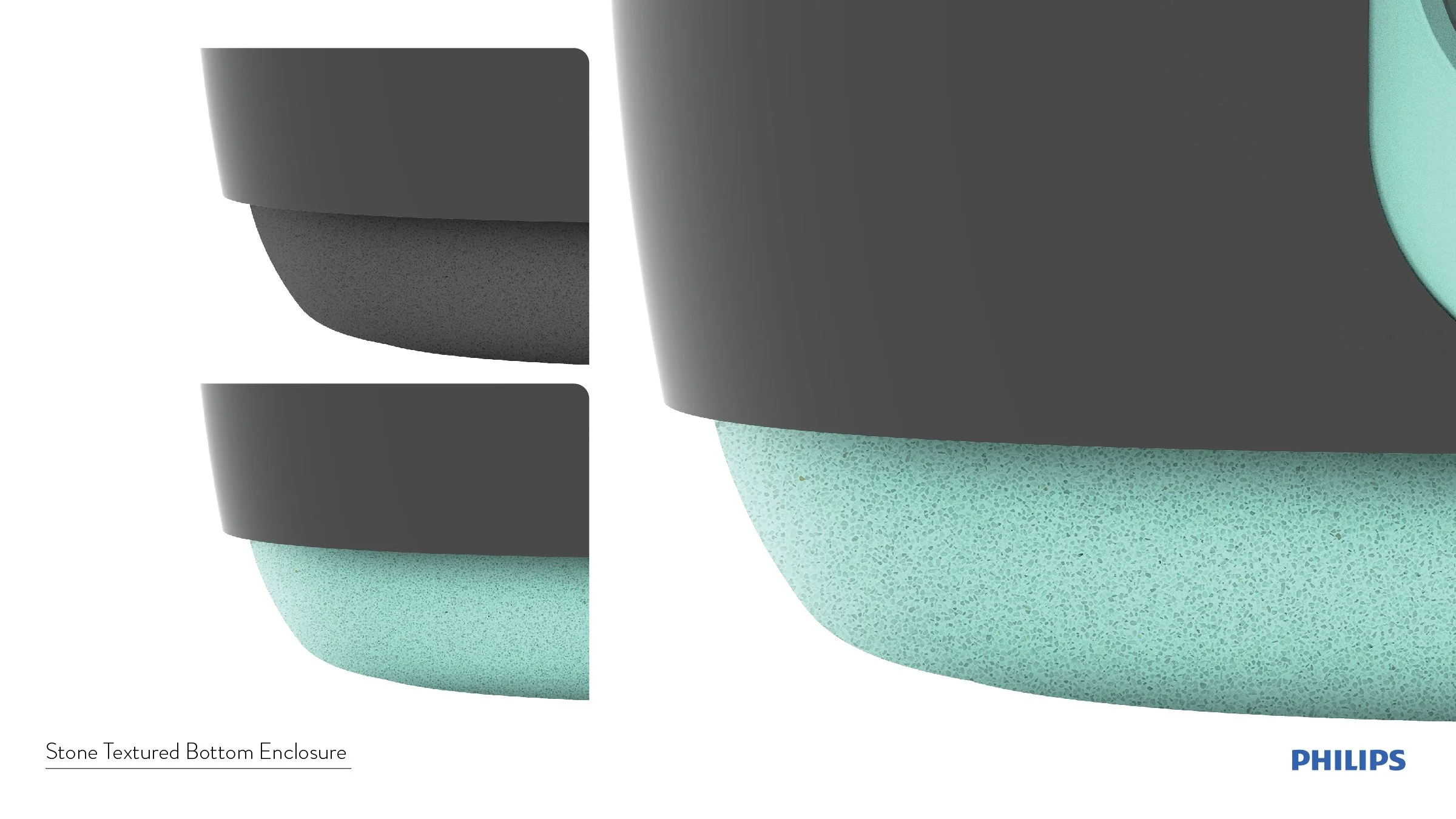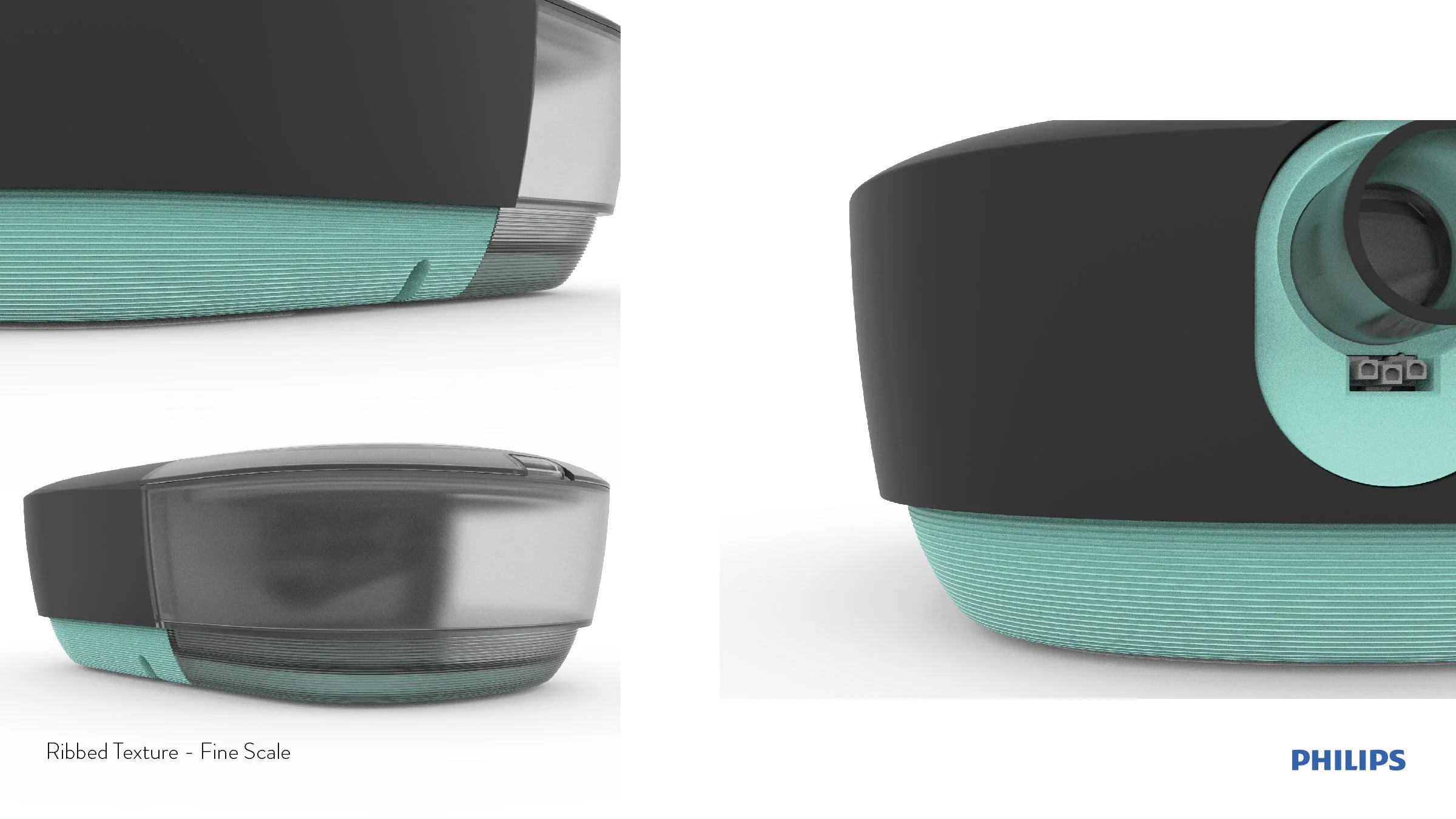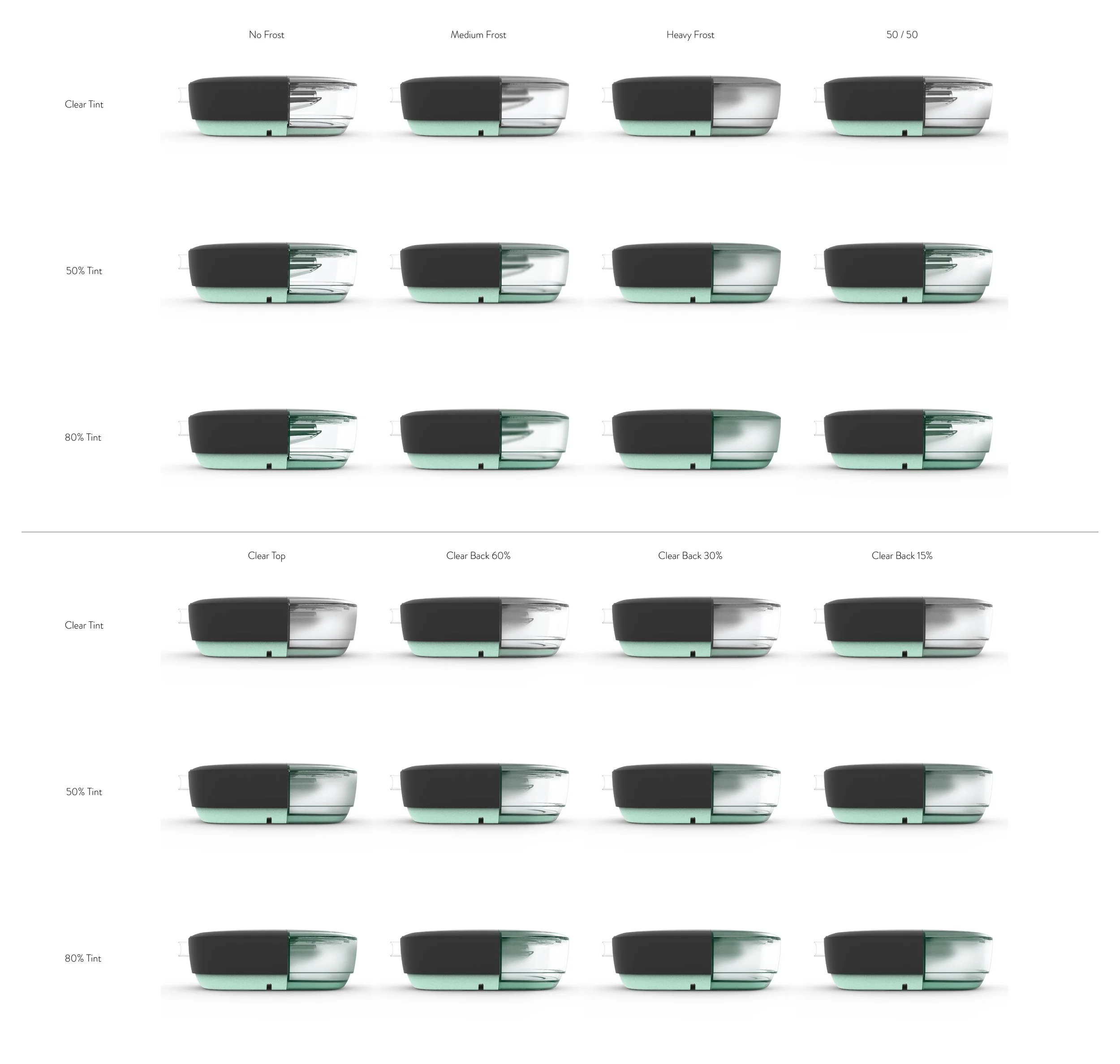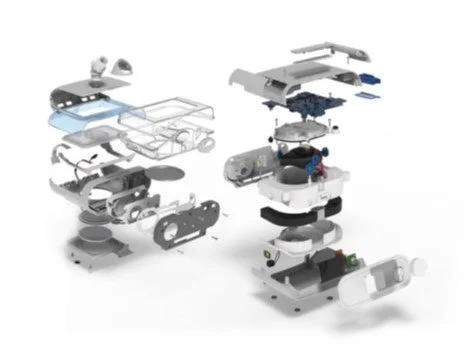
DreamStation 2
A low-profile sleep solution platform for patients with Obstructive Sleep Apnea (OSA). Its simple UI and thoughtful architecture has been designed with both first-time and long-term users in mind. To fit a variety of bedroom environments, careful consideration has been given to orientation, ensuring the device always faces the patient. Key interaction touch points are anchored along the center axis with secondary touchpoints only appearing when needed - giving the user guidance when interacting at night. Its simple, calming form uses a darker palette complemented with pops of color for a contemporary character.





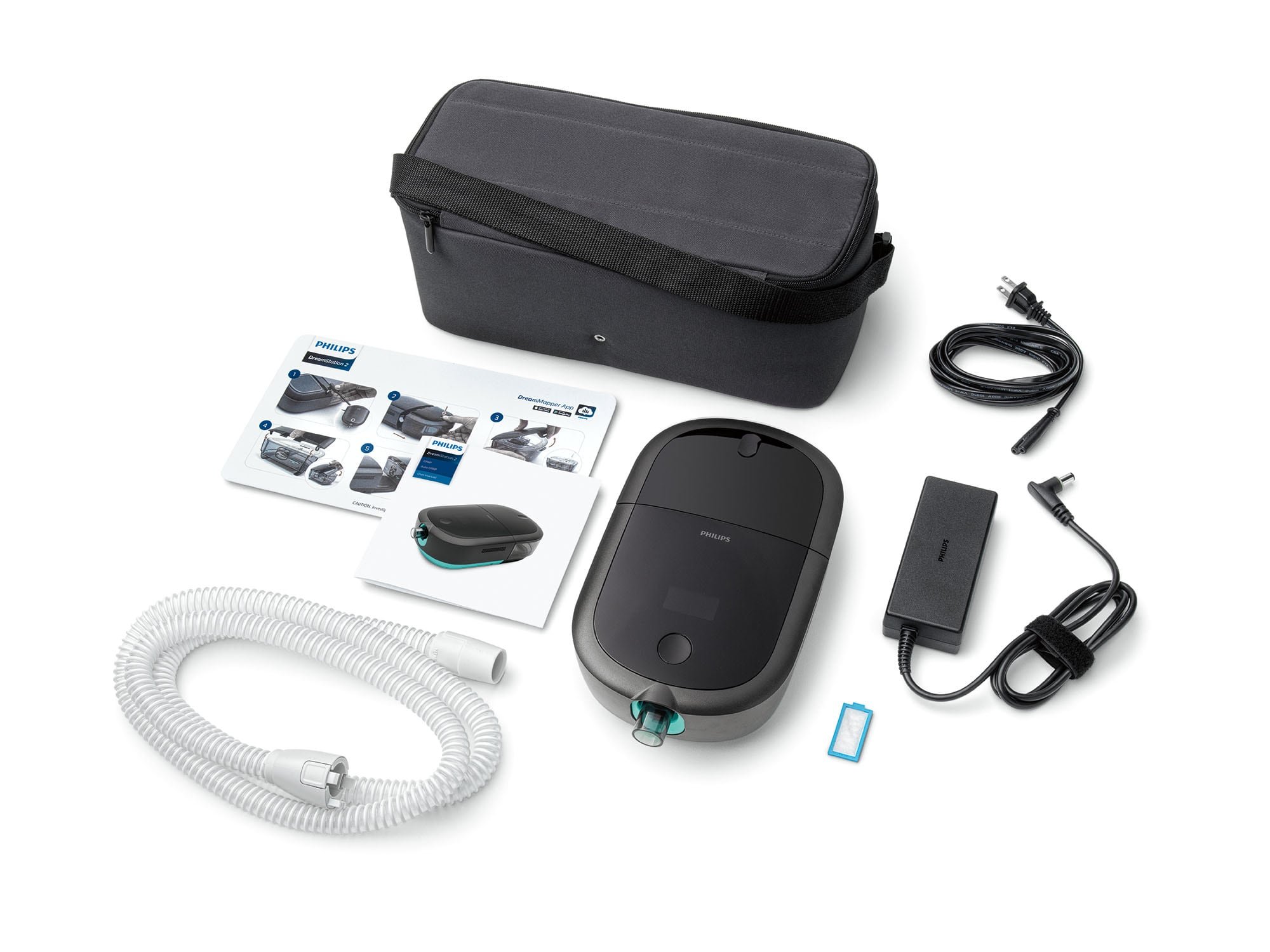


Who is this for?
What is Sleep Apnea?
Sleep apnea is a potentially serious sleep disorder in which breathing repeatedly stops and starts. The main types of sleep apnea are:
• Obstructive sleep apnea (OSA) the more common form that occurs when throat muscles relax.
• Central sleep apnea occurs when the brain doesn't send proper signals to the muscles that control breathing.
• Complex sleep apnea syndrome, also known as treatment emergent central sleep apnea, occurs when someone has both obstructive sleep apnea and central sleep apnea.
What is CPAP?
CPAP stands for Continuous Positive Airway Pressure. People with moderate to severe sleep apnea might benefit from using a CPAP machine that delivers pressurized air through a mask throughout the night. With CPAP, the air pressure is high enough to force your upper airway passages open, thus preventing apnea events and snoring.
It is estimated that sleep apnea impacts over 1 Billion around the world
What is it comprised of?
Why design this?
Why did Philips choose to enter this space?
Competitor movements and the desire to treat more people with Obstructive Sleep Apnea (OSA) demanded a solution that could be cost competitive yet offer the same cutting edge therapy our patients desire. Satisfying the differing needs of DMEs (Durable Medical Equipment) and their workflows required a scalable platform that could accommodate a variety of users and uses cases today, but also set them up for the future.
DreamStation 1 (Predecessor)
Project Scope
Develop a cost competitive cpap platform that is scalable and can accomodate a variety of users and use cases both today and in the future. Satisfy the differing needs of DMEs (Durable Medical Equipment) and their workflows while providing a positive experience for users. Go beyond the 'box' to craft a compelling experience that leverages established digital solutions to create a seamless experience that meets the high expectations of our users.
Cost Competitive
Scalable Platform
Leverage Existing Digital Solutions
Improve Usability
Objectives
De-stigmatize
Reduce Parts (Sustainable)
Platform of Products
Simplify Experience
Opportunities
Base & Plus Versions
Process | Human-centric Design
Discover
Immerse in people’s daily lives and explore the wider context of their challenges.
Frame
Based on the current situation, define the challenges and opportunities at hand.
Ideate
Transform insights into ideas, explore creatively, then analyze and converge on potential solutions.
Build
Make ideas tangible, build prototypes, test them with users and draw insights to move forward.
Philips Co-create
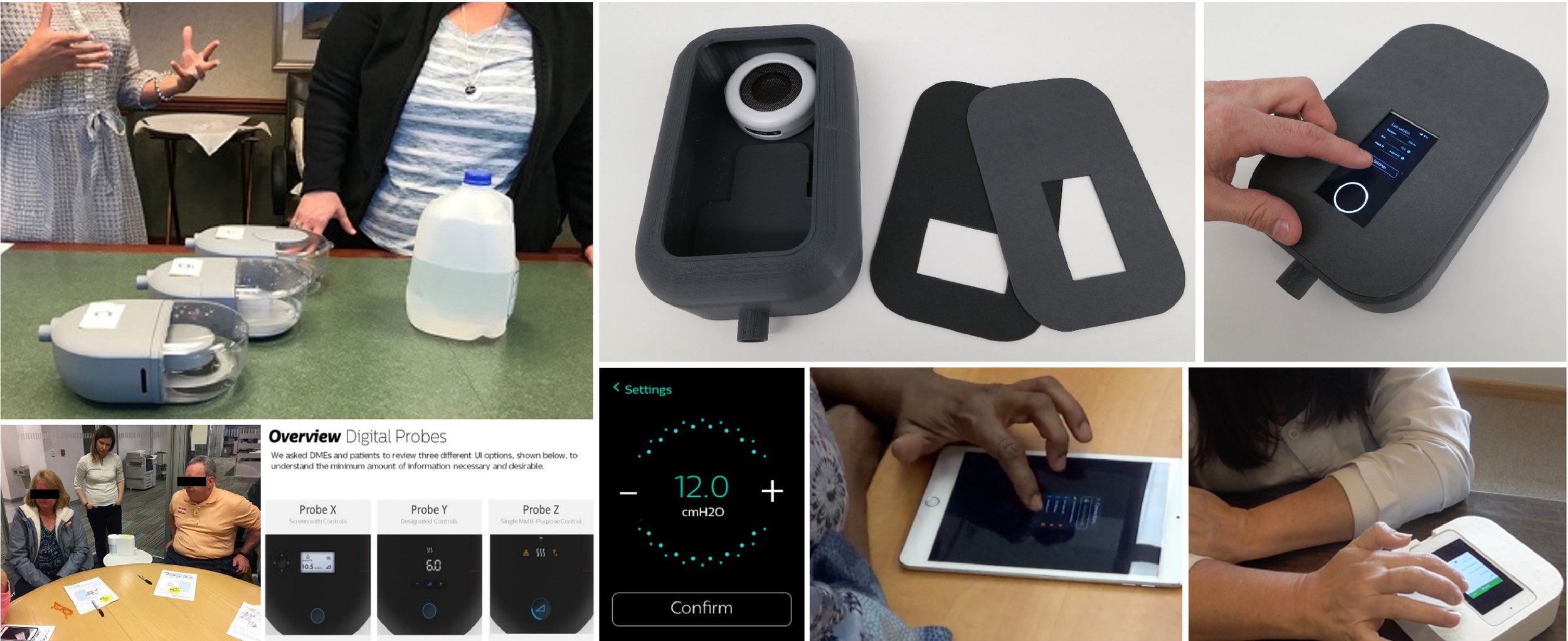
Discover
Design Research
Approach
During the development I helped plan and facilitate many design-led user research. This helped the team confidently determine key user needs, as well as evolve the interactions of the device and UI.
Key Learnings
Smaller Size: a Compact Footprint was preferred
Simplicity: Simple Interactions were seen as an improvement
Flexibility: The form factor of DS2 allowed it to adjust to a wide range of environments
Consistency: Maintaining a consistent and clear UI was necessary across both devices
Transparency: Patients want to see their data and track progress

FRAME
Framing
Approach:
Building off our initial VOC we needed to assess the competitive landscape, define our design drivers and define our approach for attacking this market.
As CPAP becomes more commonplace and consumer-facing we need to differentiate in new ways that provide our patients with a simplified, human-centric user experience.
Design Drivers / Mood Boards
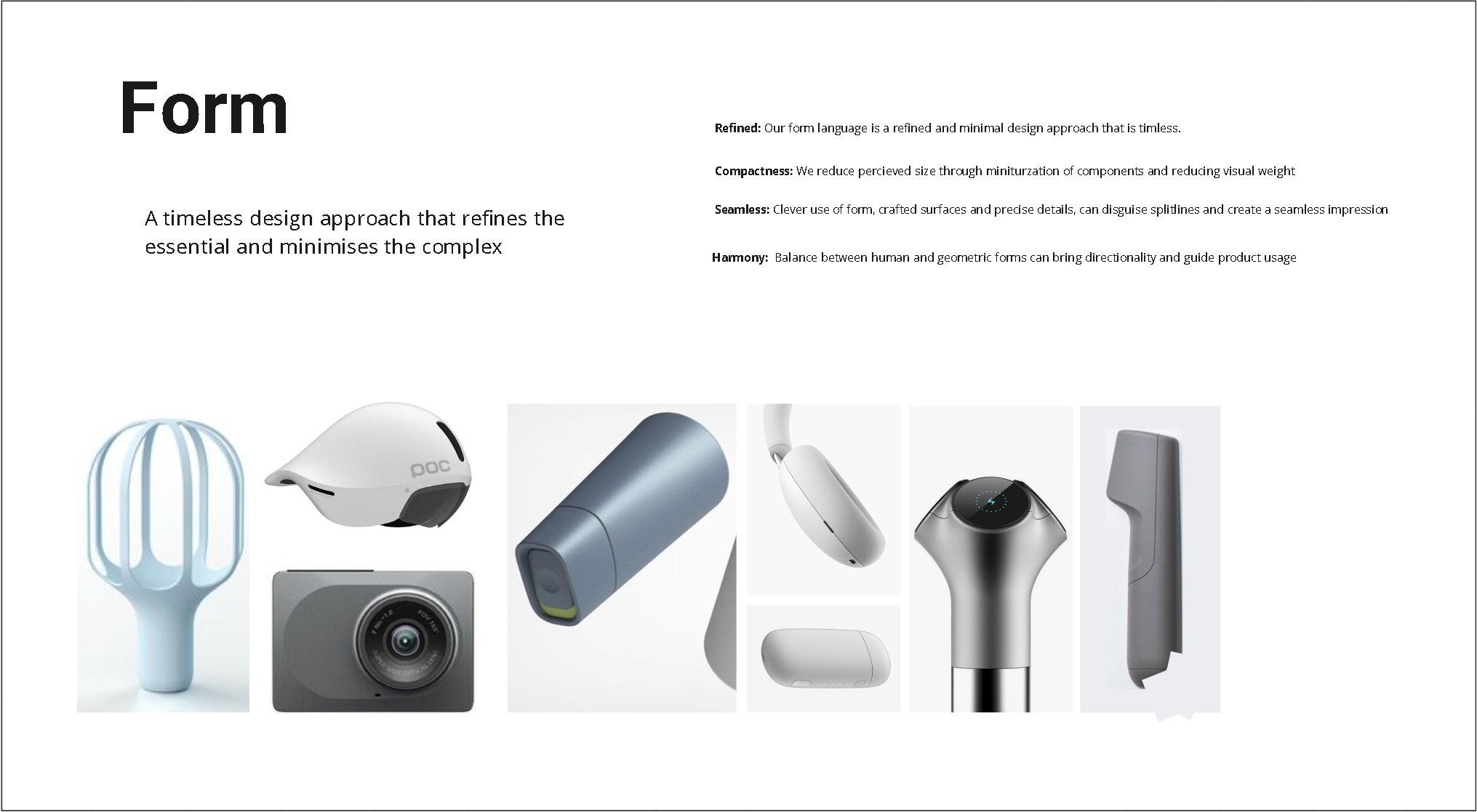
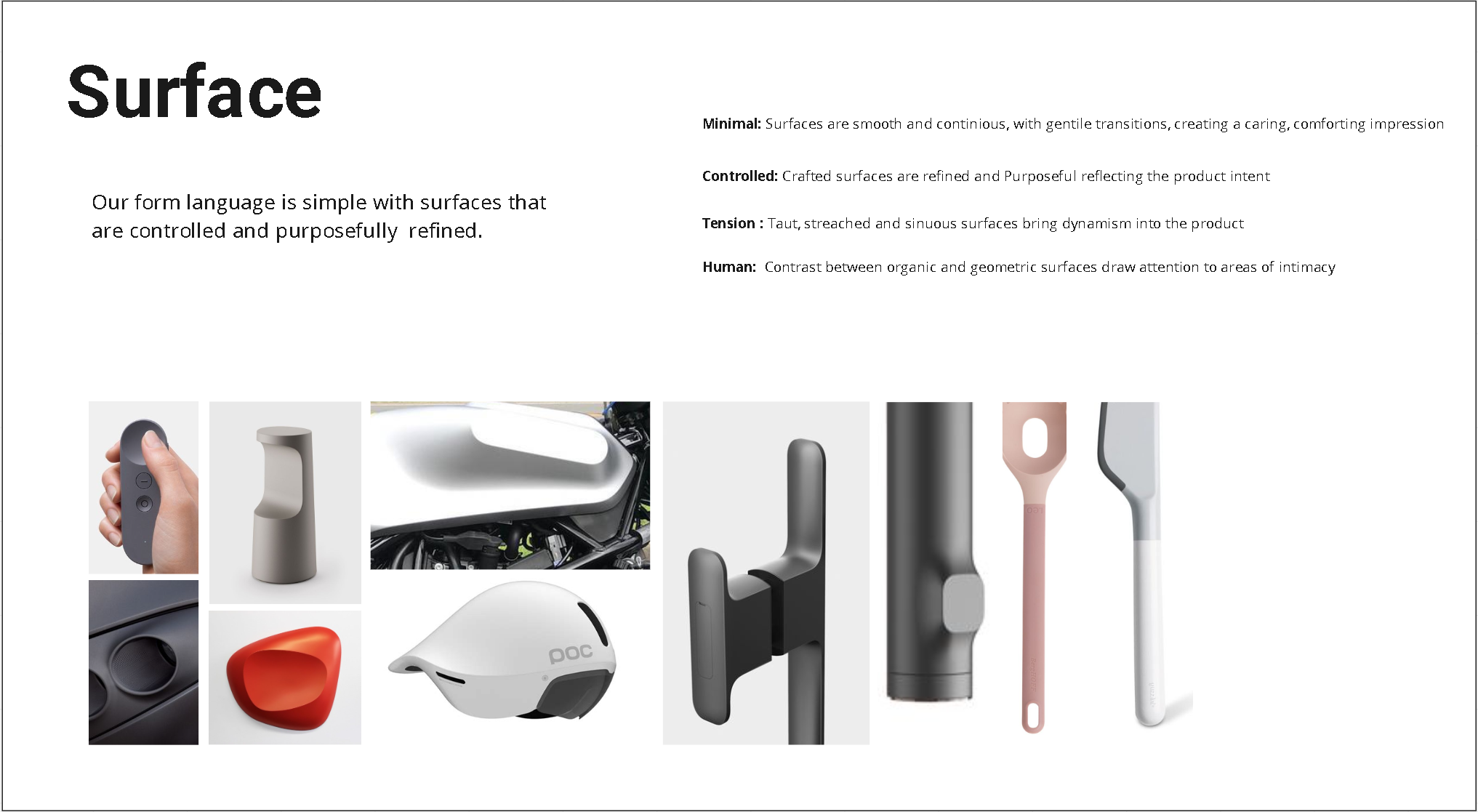
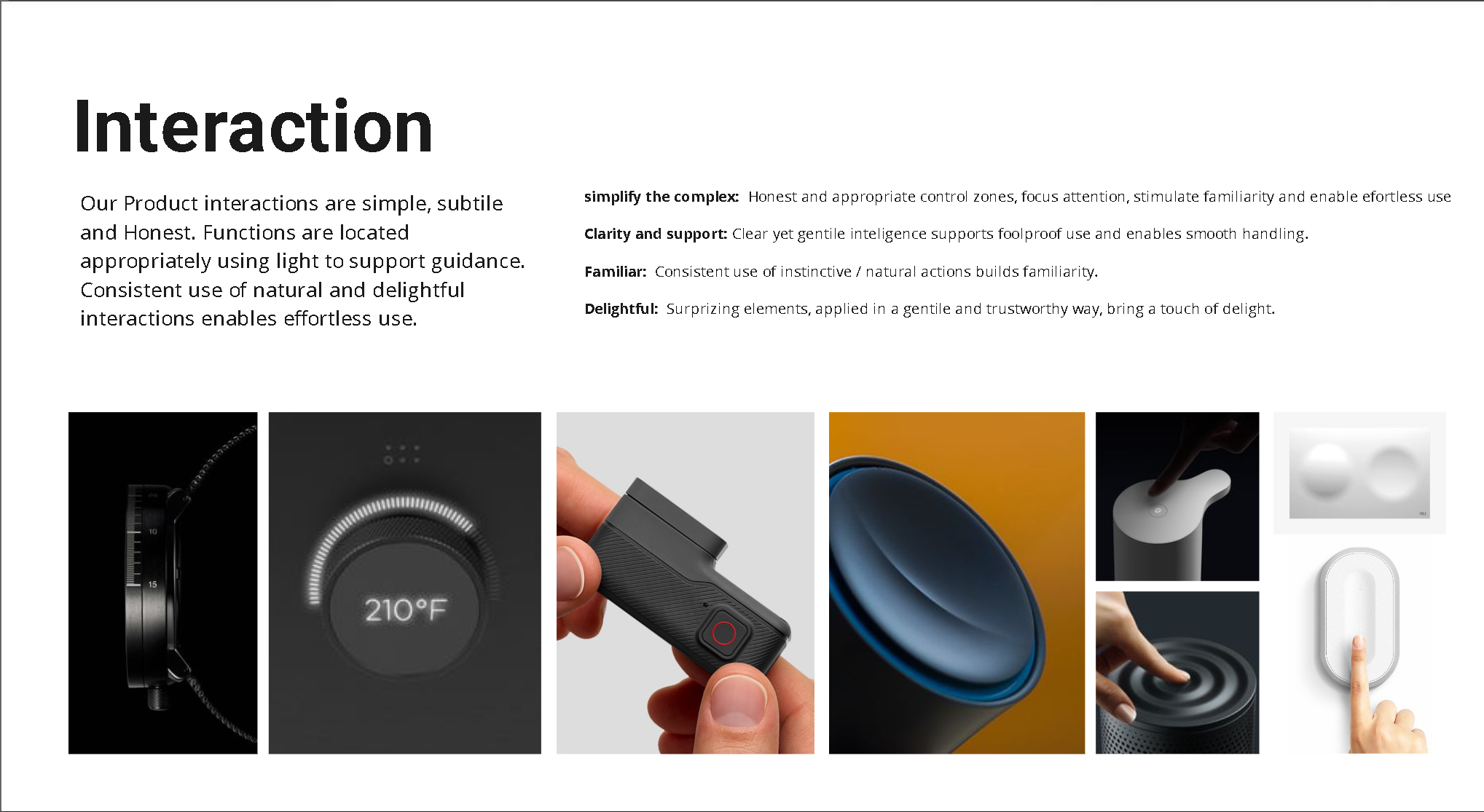
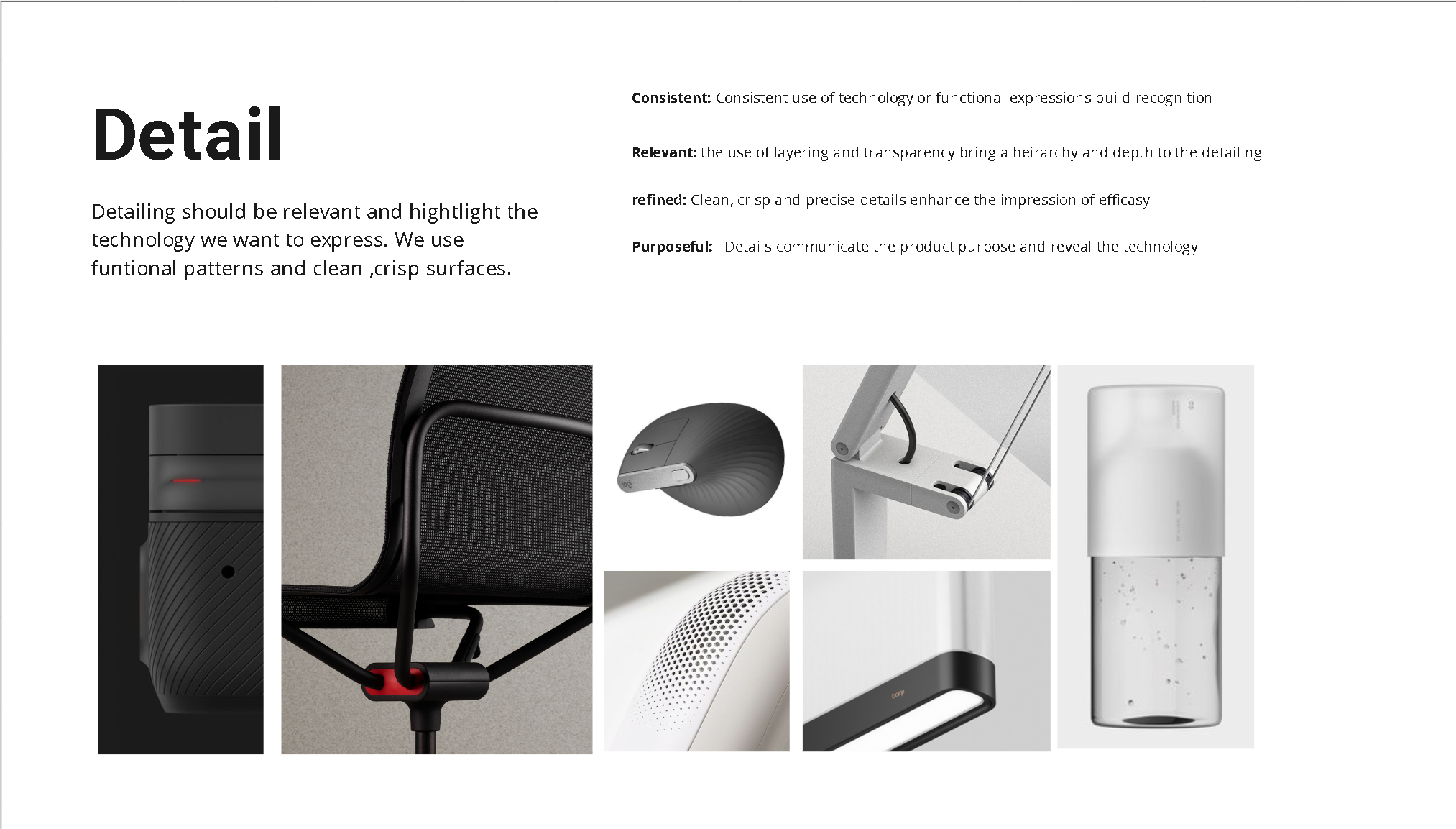
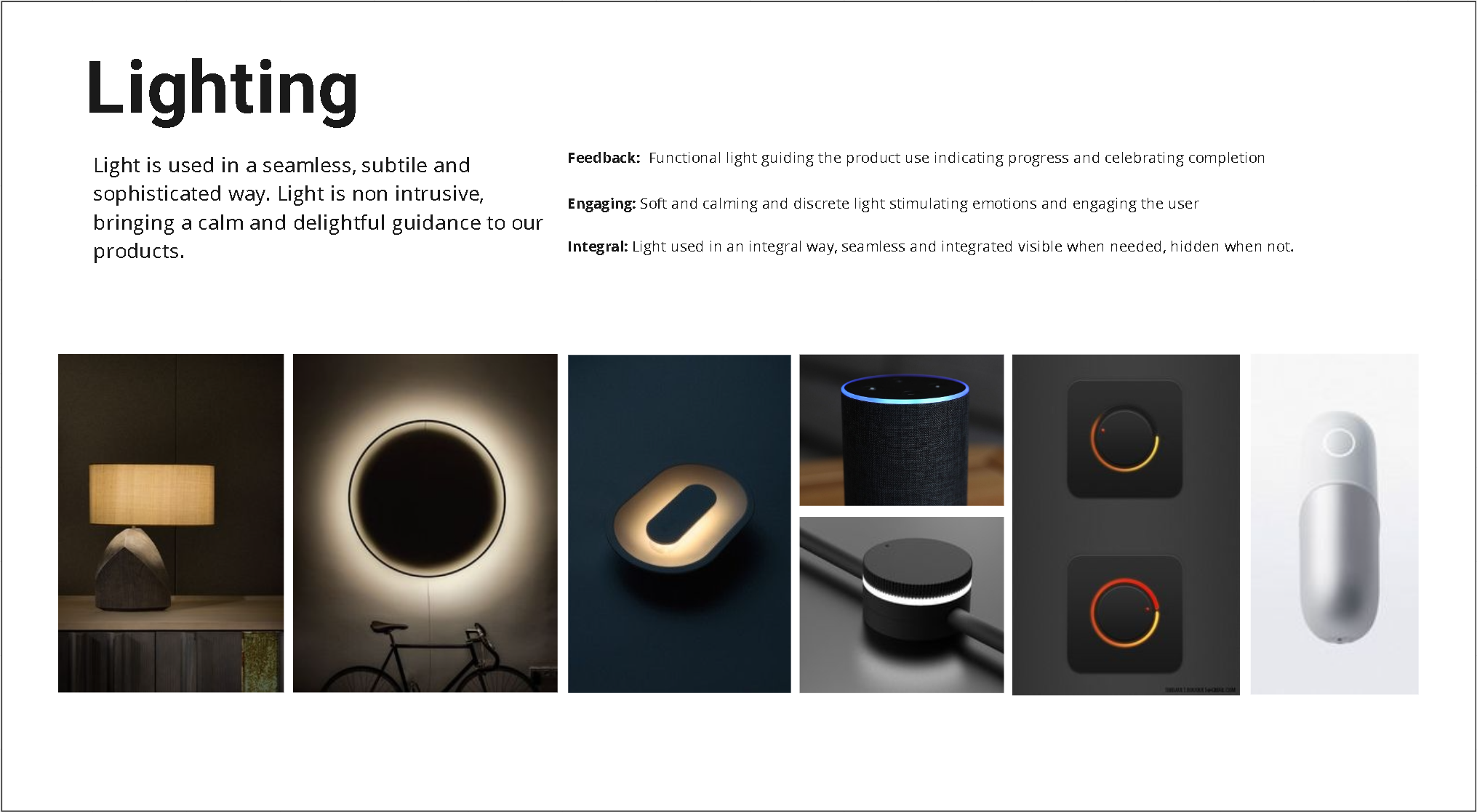



IDEATE
Brainstorm
Approach:
Large and small multidisciplinary CoCreate-style workshops were held in Boston and Pittsburgh to reimagine not only the physical form, but also the UI tech that would meet expanded market requirements and enable differentiation. Collaborating closely as a team we ideated concept directions based on form and function.
From this exploration we were able to go through several rounds of iterations, ultimately refining the initial concepts into the form factor you see on the market today.
Additionally, we were able to narrow in on 2 approaches for the user interface. This became a key differentiator for the DreamStation 2 platform.
The more cost competitive Base Model would have a simplified UI experience, while the more premium Plus Model would provide a larger display with more information and control.
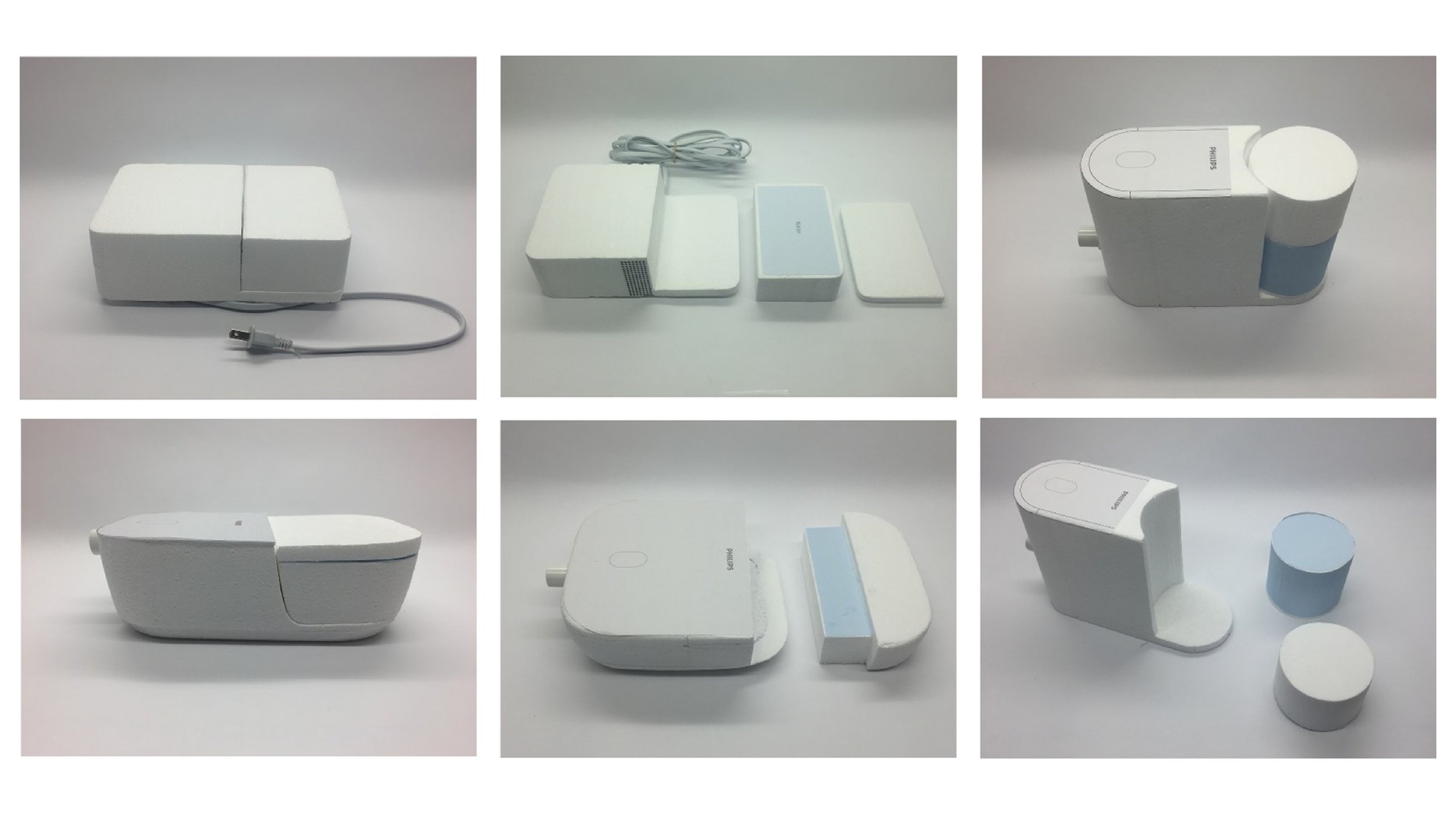
Build
Prototype
Approach:
Prototyping was a consistent part of the design process from the beginning to end of this project. From early foam mock ups, 3D prints, and appearance models, being able to get hands on and evaluate the form and function was key to the success of the design.
These mock ups also became great visual aids to place in front of users for feedback throughout the project.

CMF Exploration
Trends:
Here is a short consumer lifestyle trend analysis I pulled together during this project. My goal was to understand more about the environment DreamStation 2 would live in. I explored the macro trends around color, interior design, and the functionality of ones space.
CMF Exploration
During this phase of the design process I explored both the color choice and application of color on the DreamStation 2 platform. I worked closely with the Philips trend team and our Bio-compatibility teams to ensure our recommendations were viable and on trend with consumer research. Some key considerations I took were:
Shared components between Base & Plus
Appropriateness for the bedroom
How to De-stigmatize / Less medical looking
Premium vs Base
Air Inlet Exploration
Each detail of the design was carefully considered. One feature that needed refinement, was the air inlet. The inlet needed to maintain a specific area of opening to optimize the airflow. Using that constraint, I explored a wide variety of patterns for the air inlet.
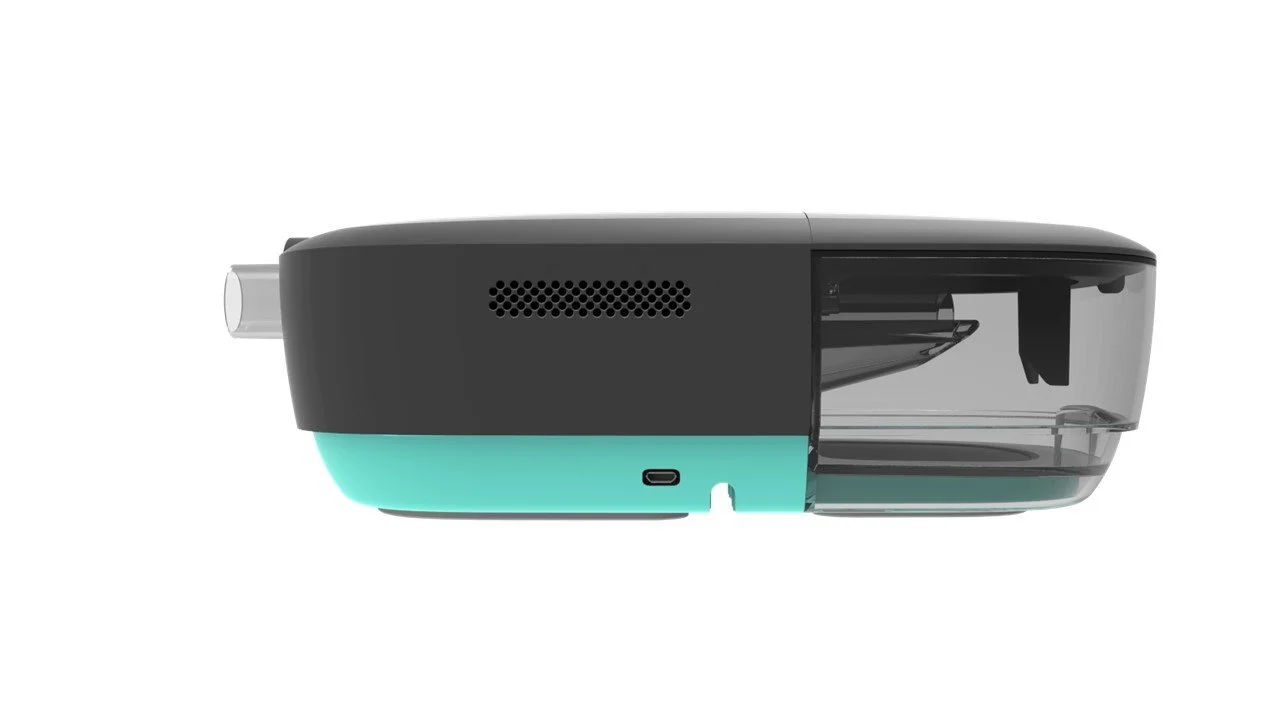
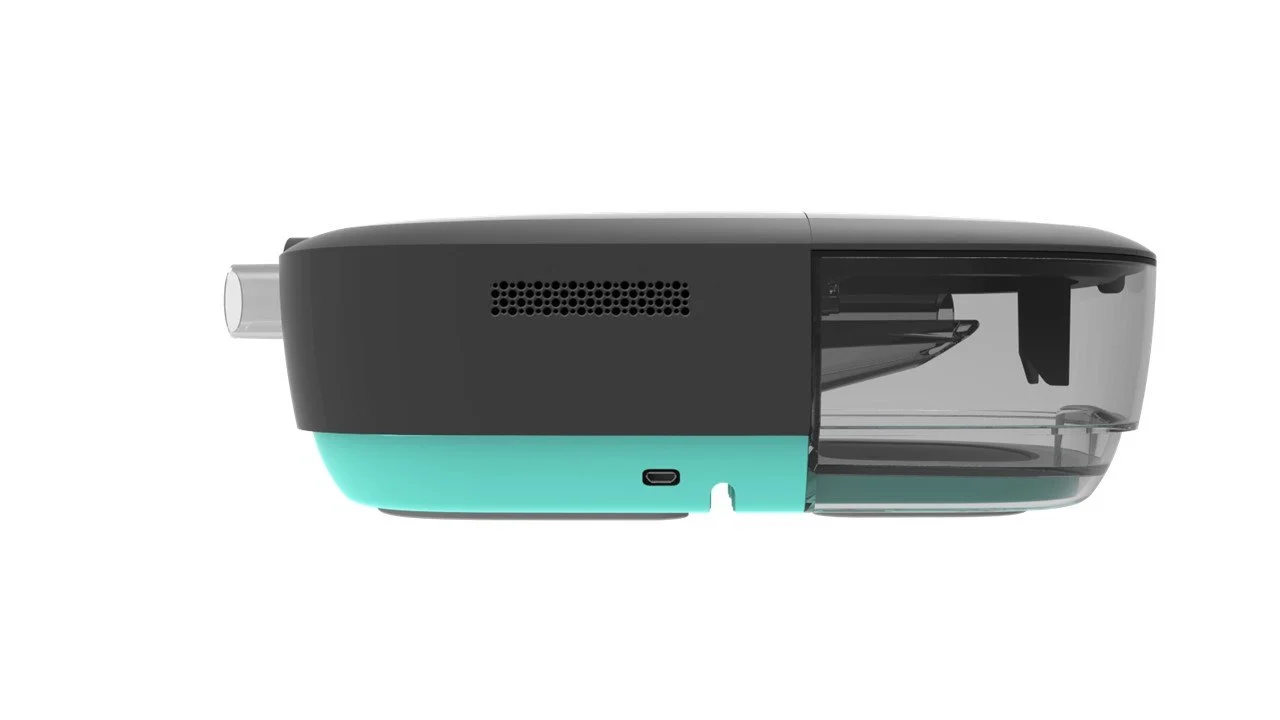
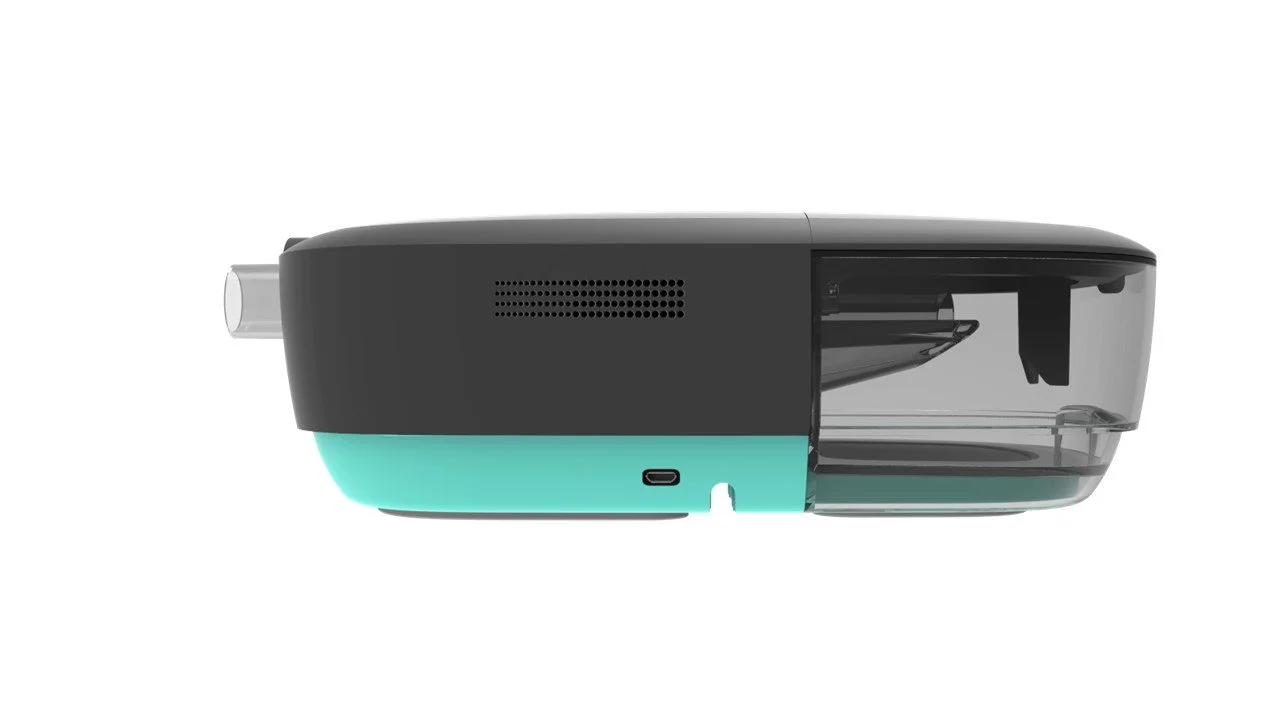
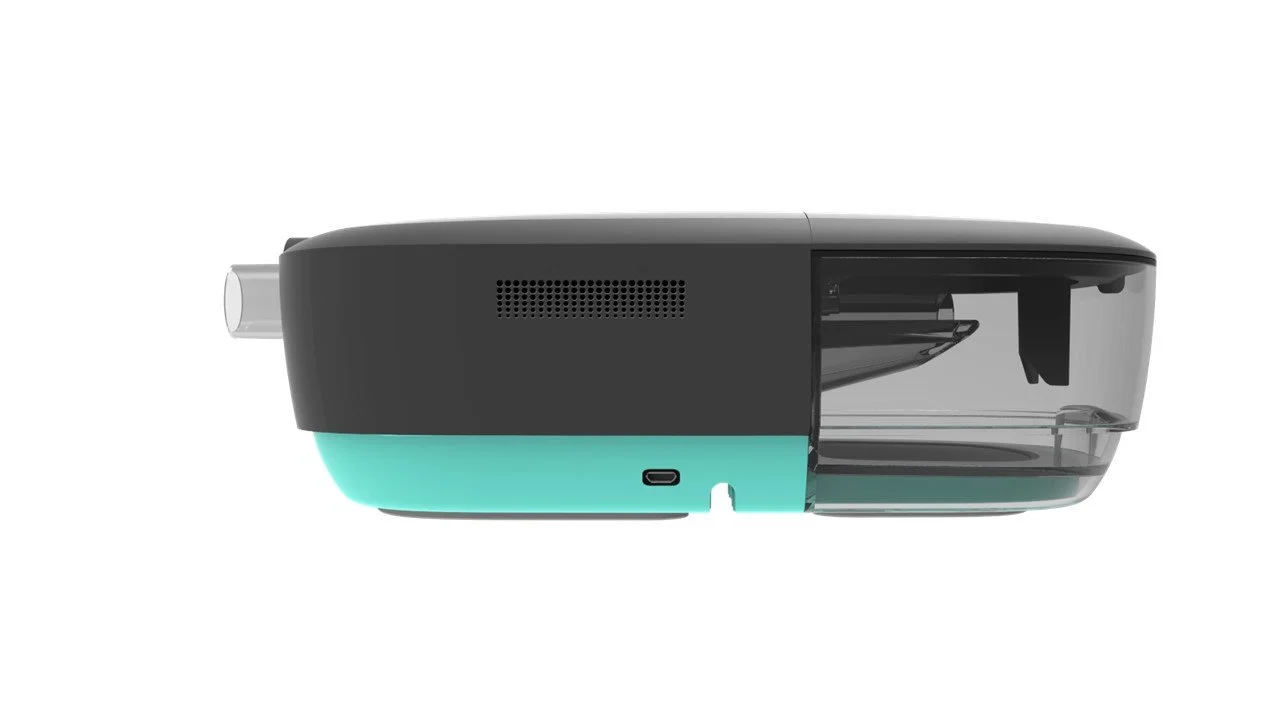

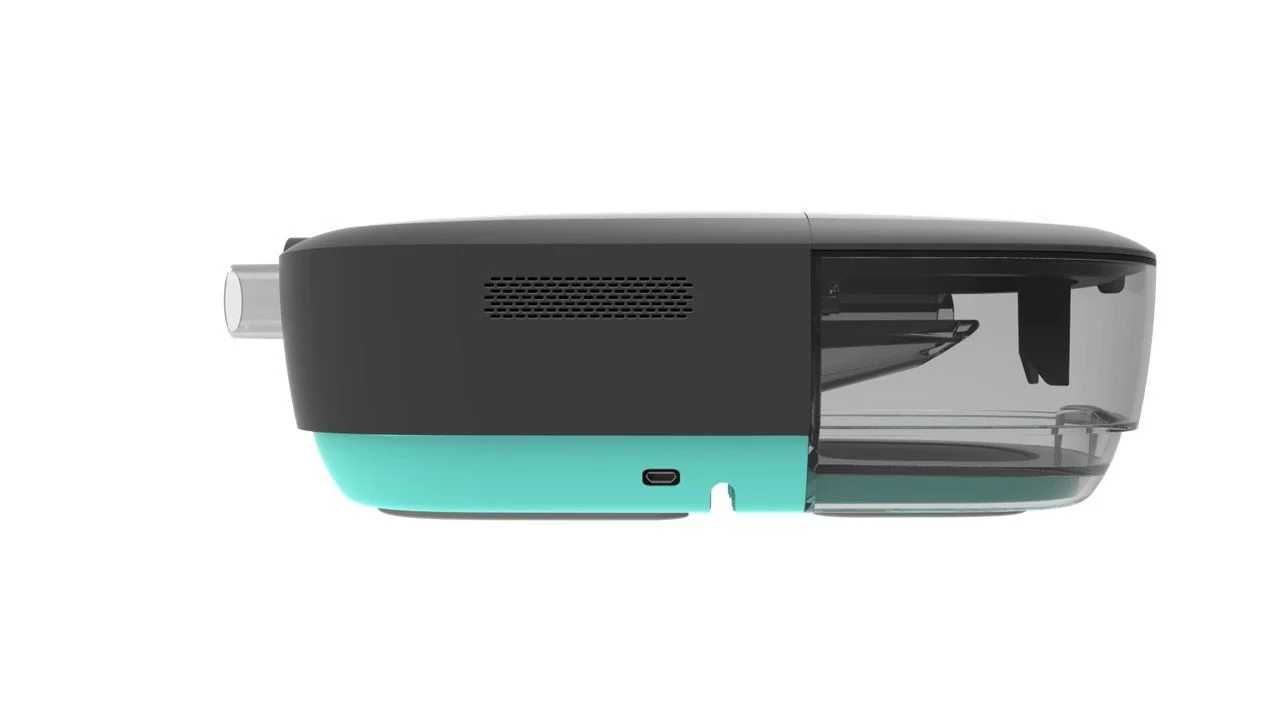
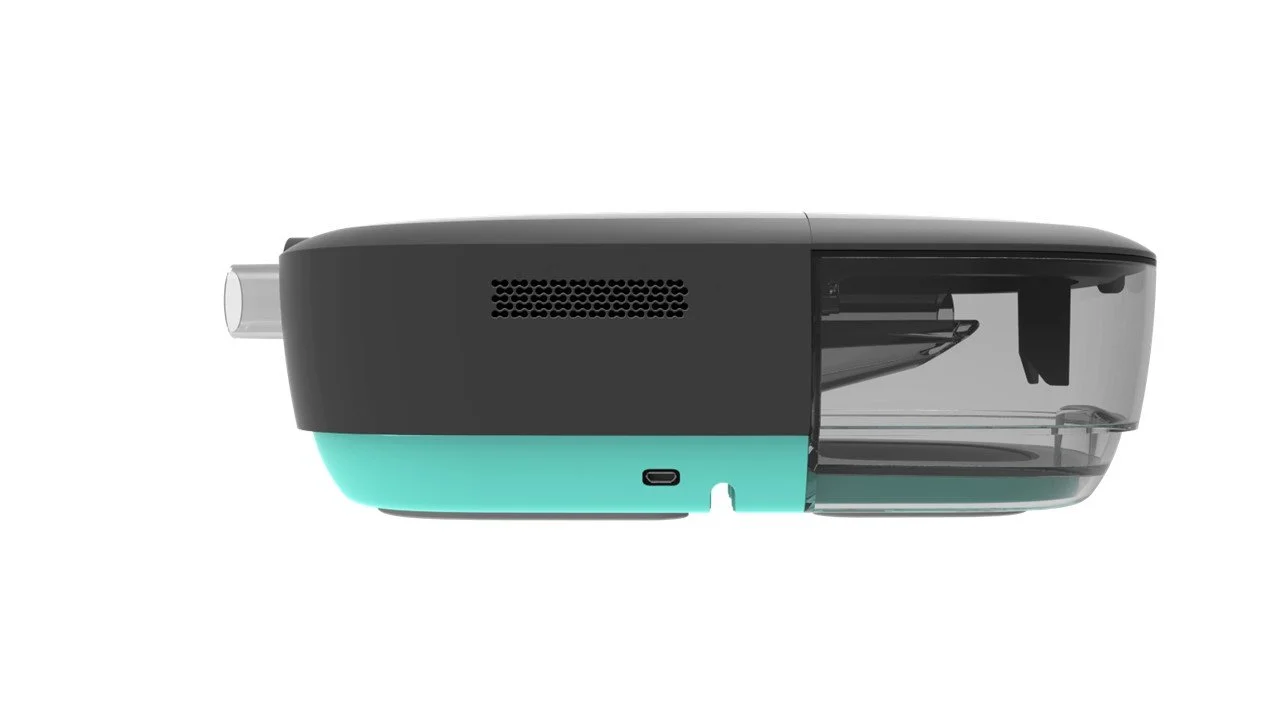
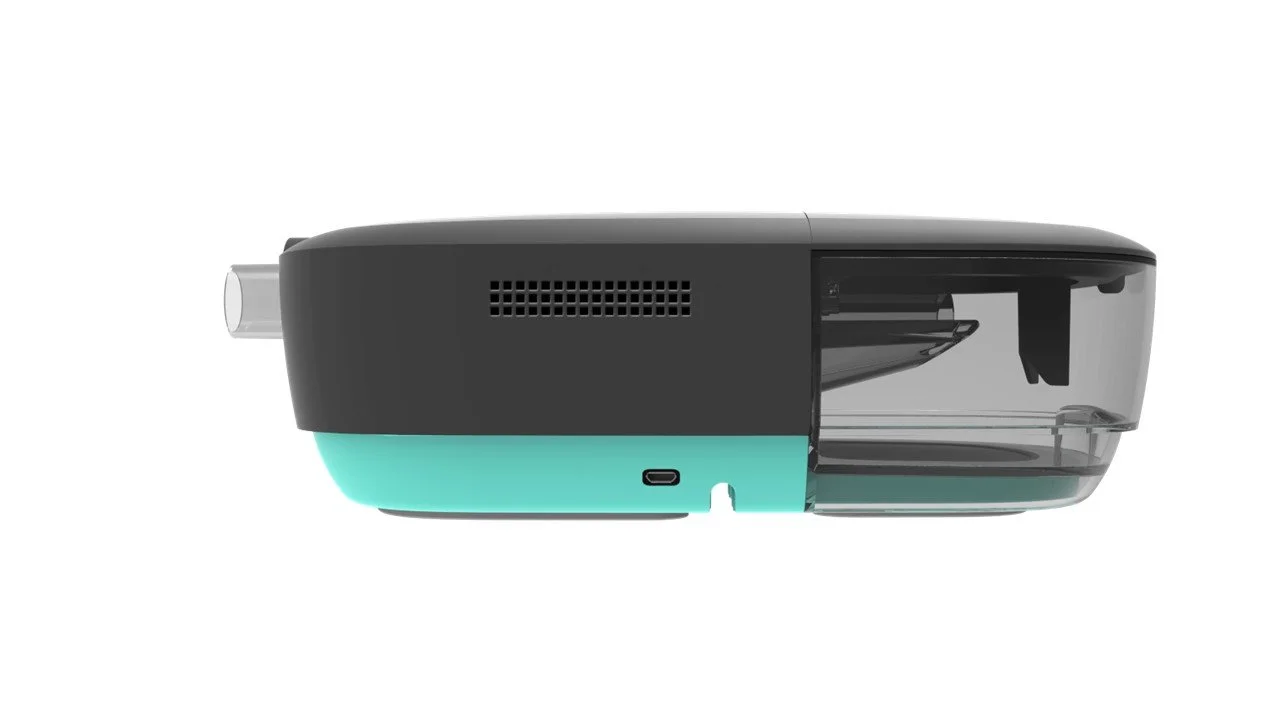
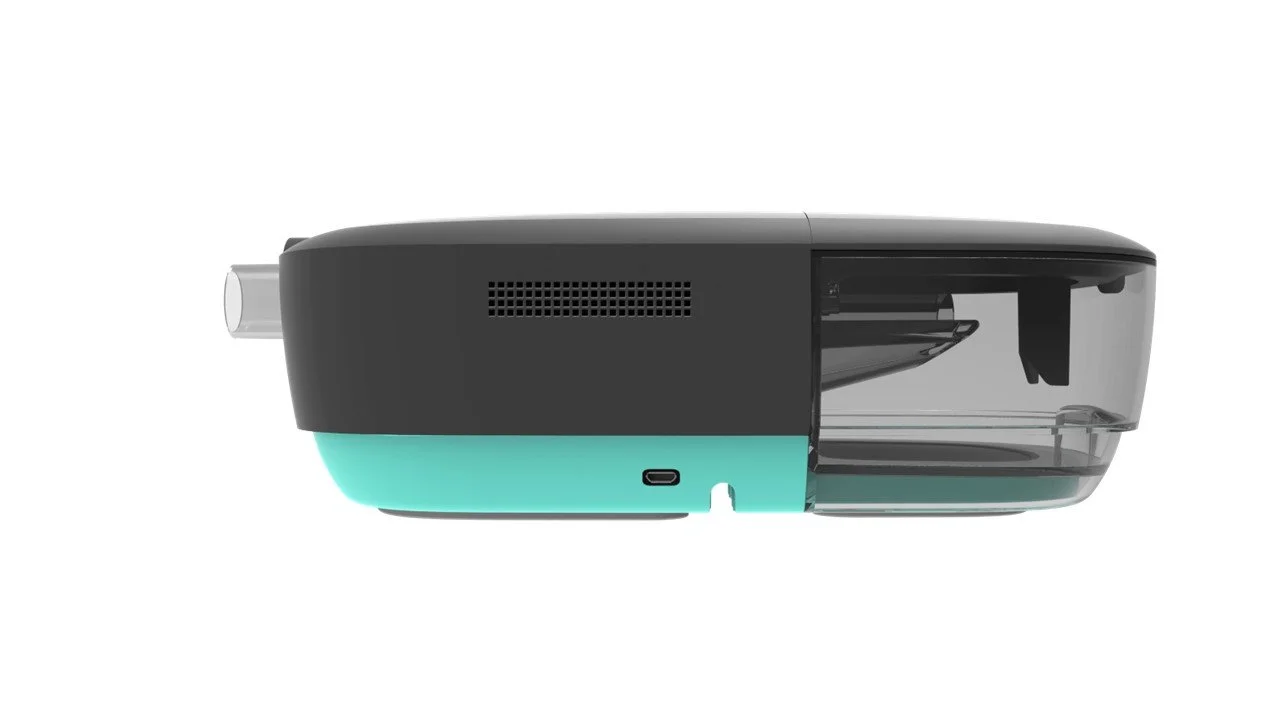
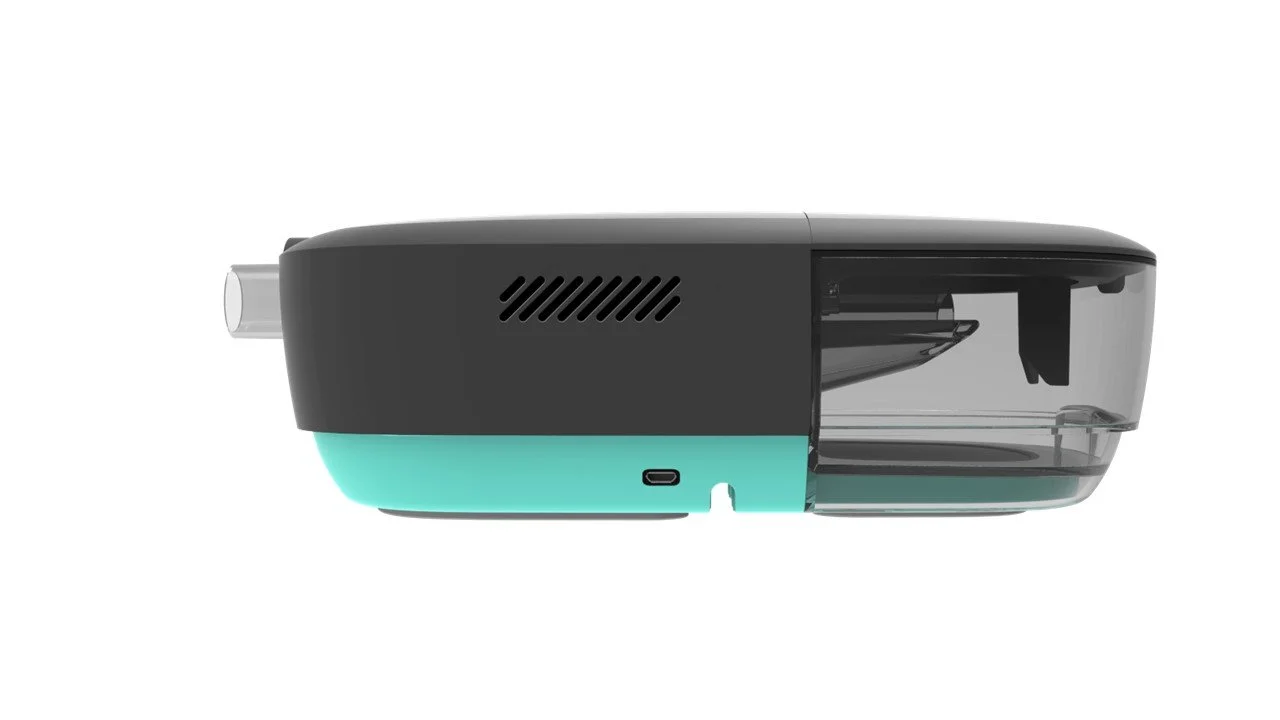
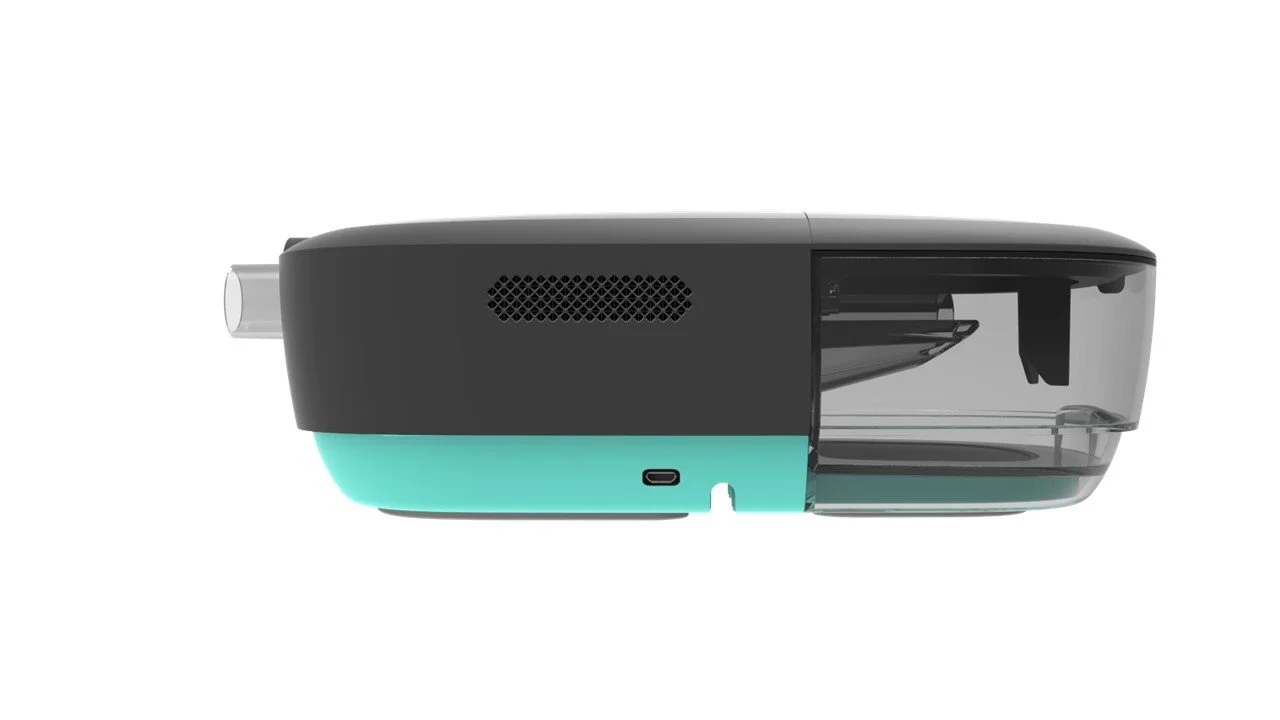
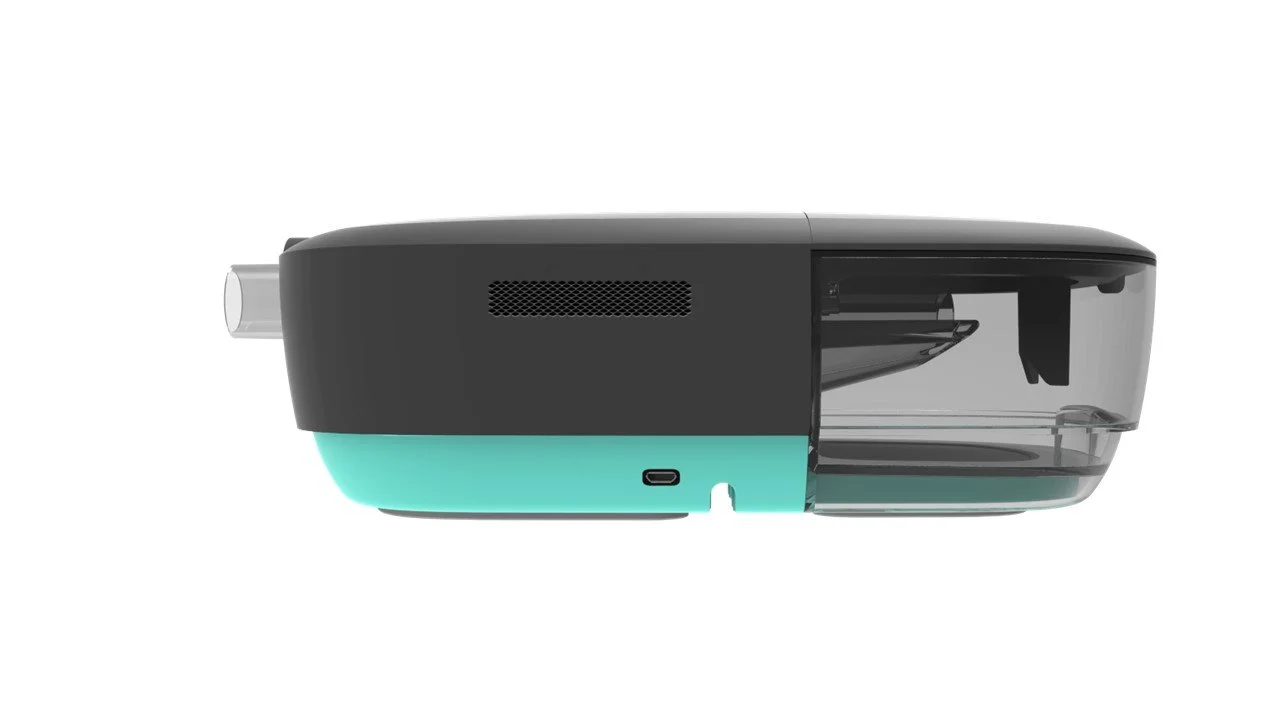
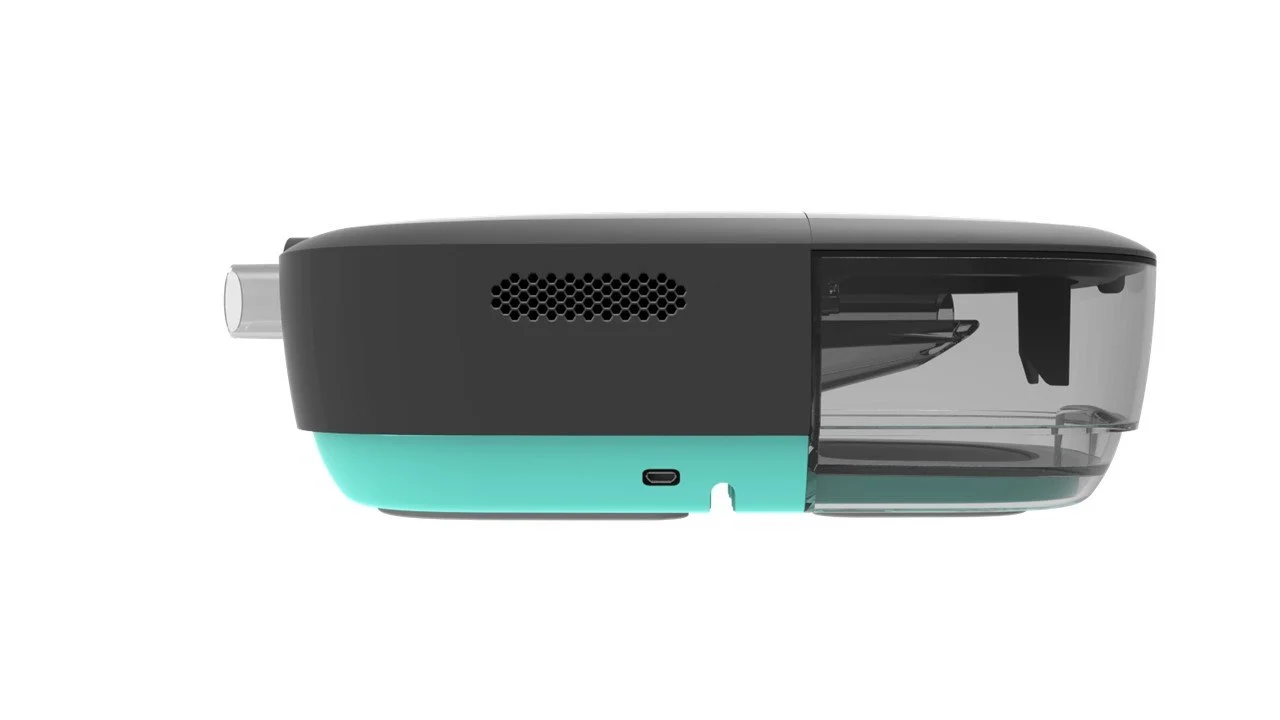
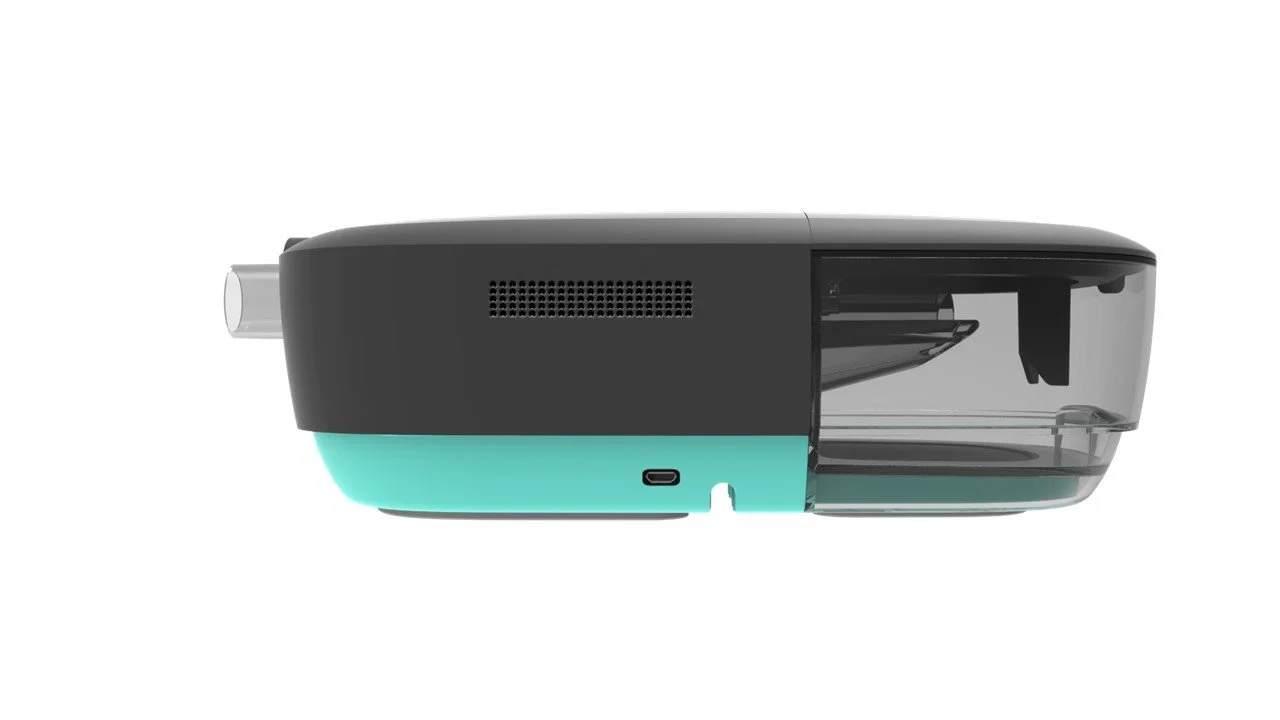
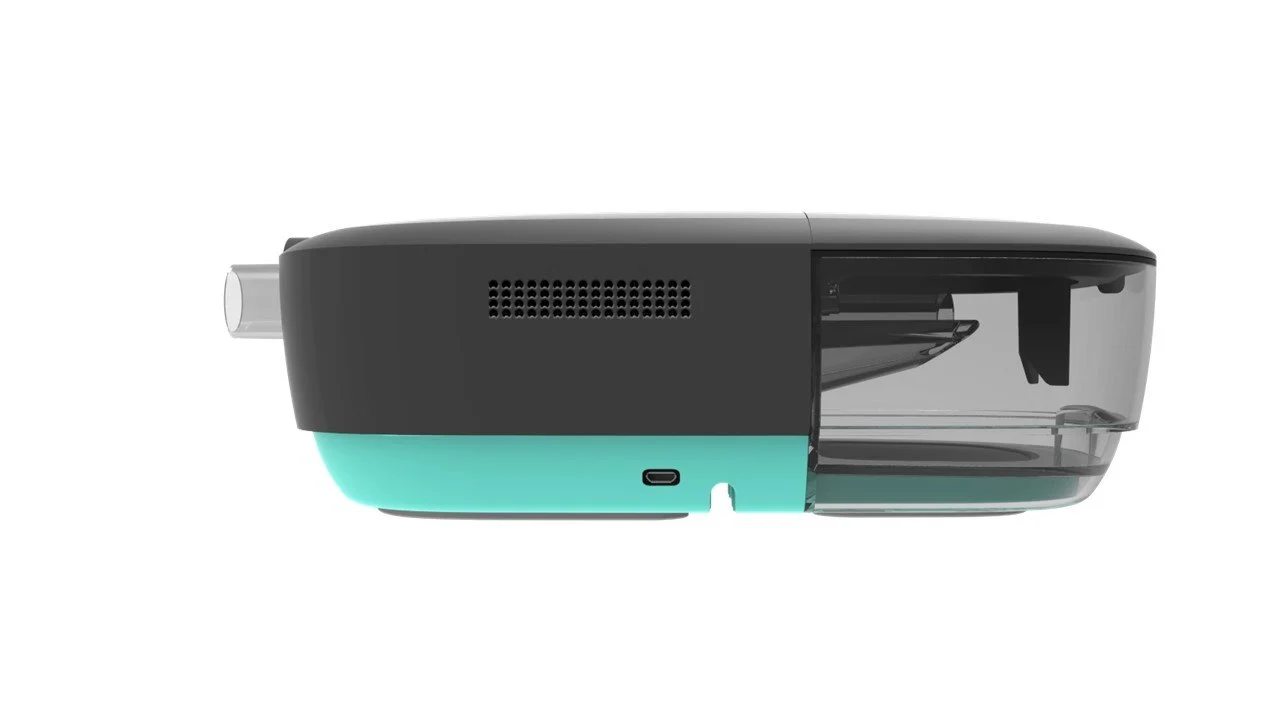
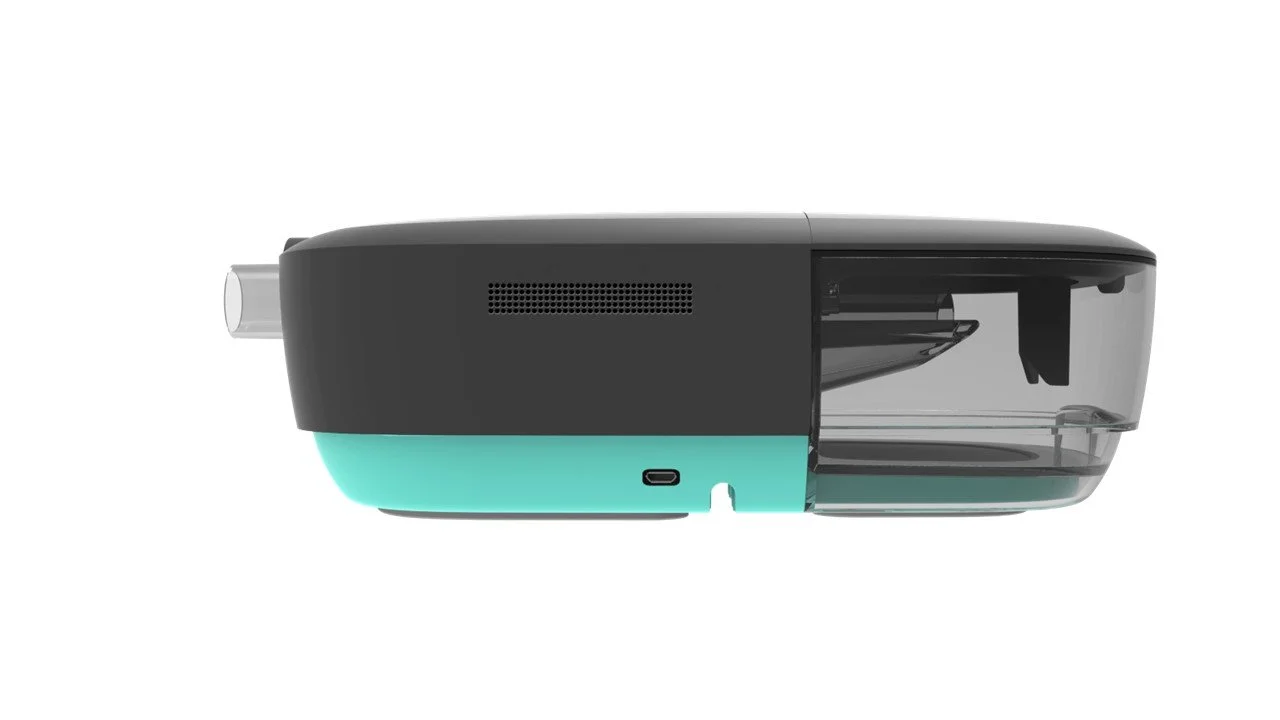
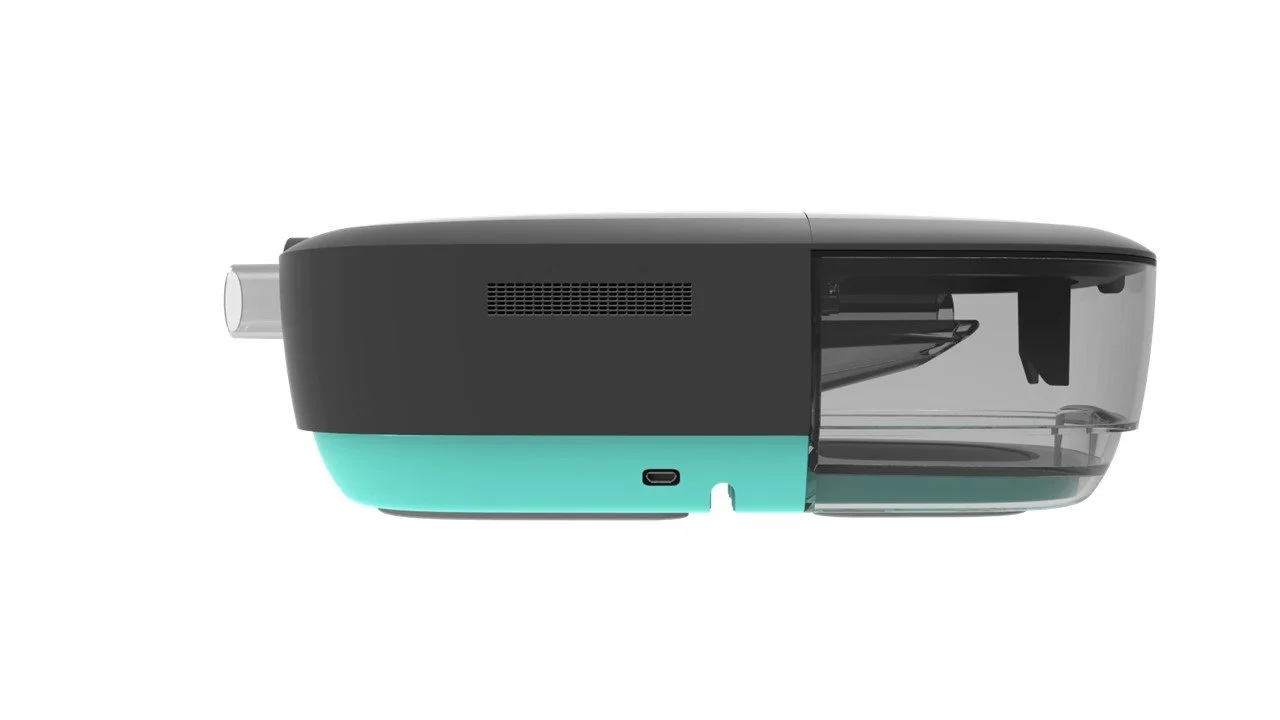
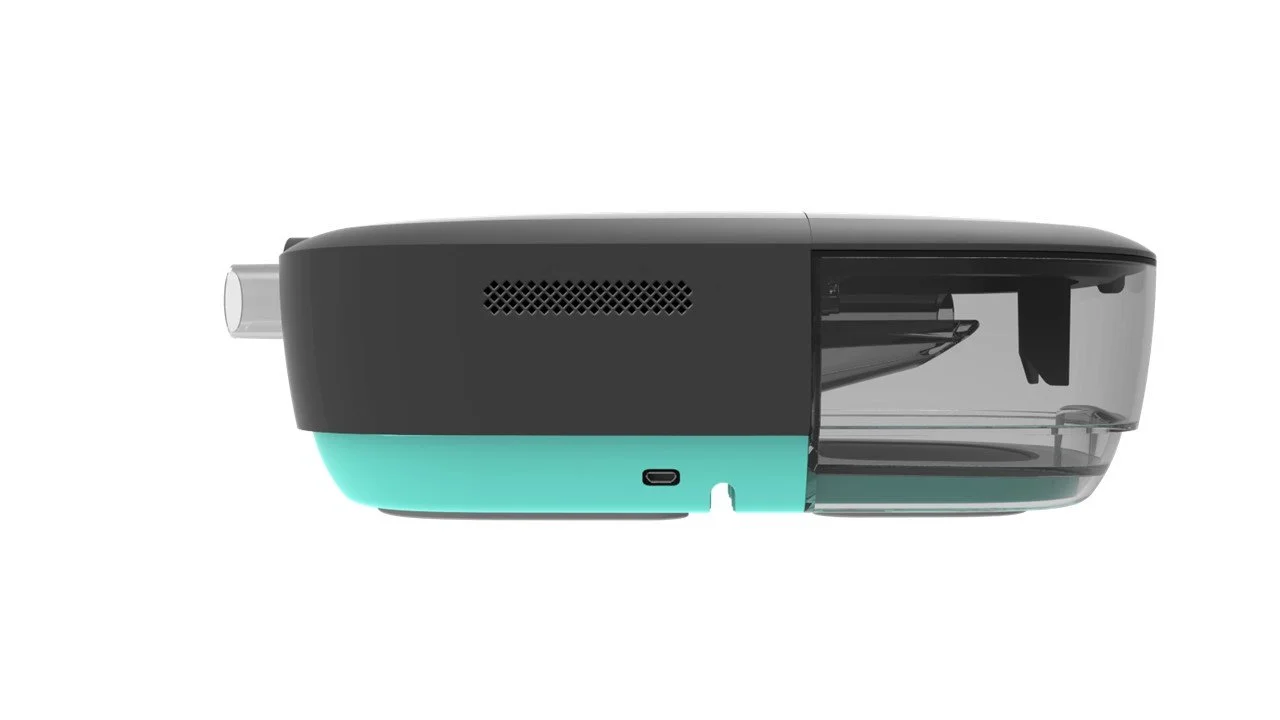
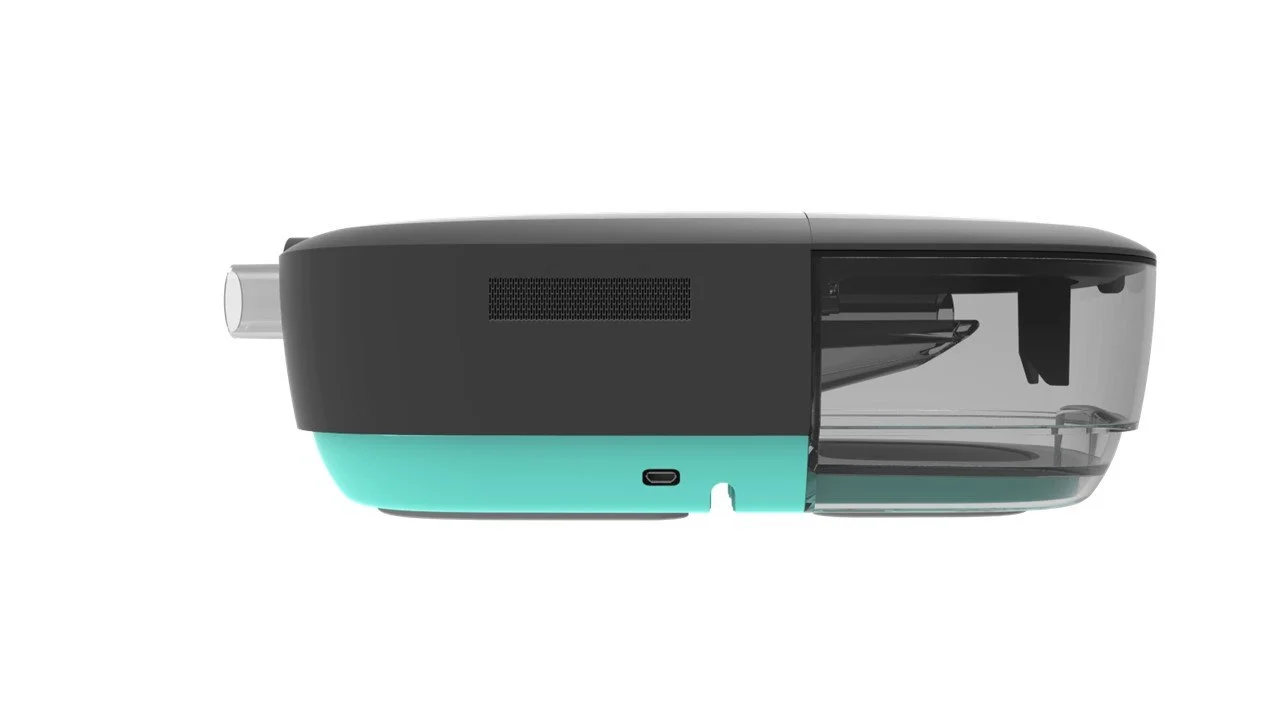
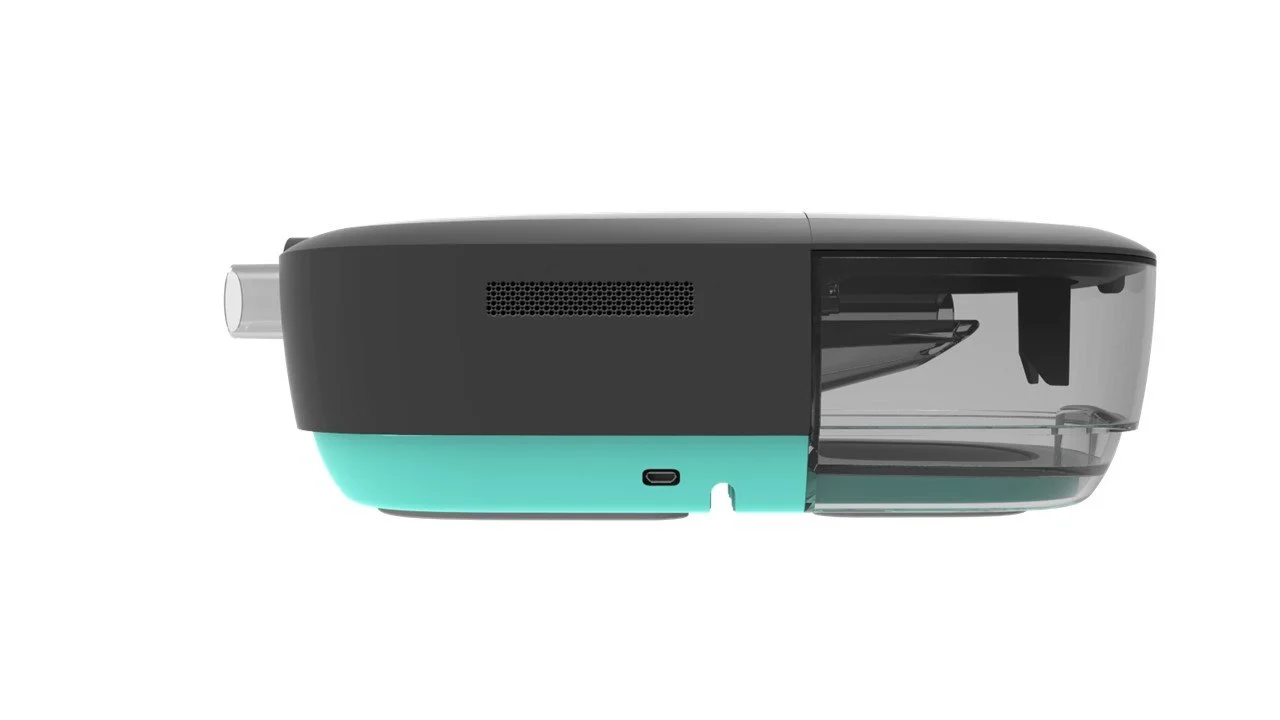
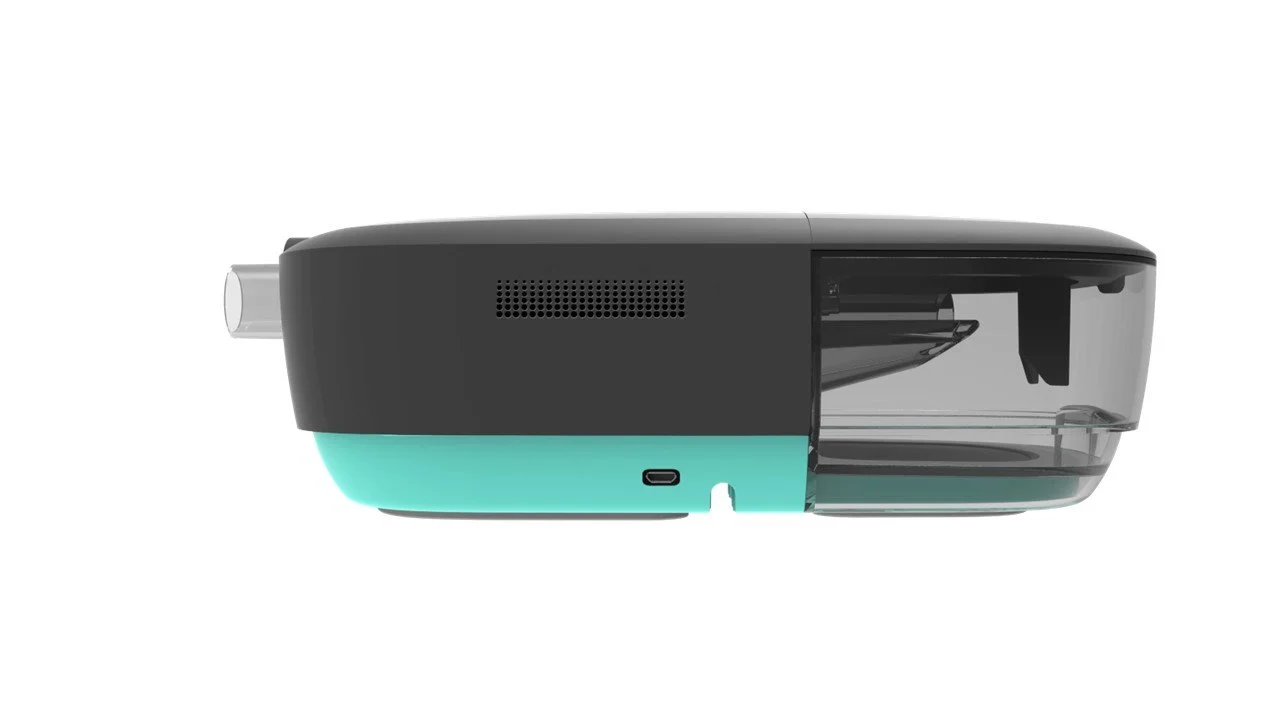
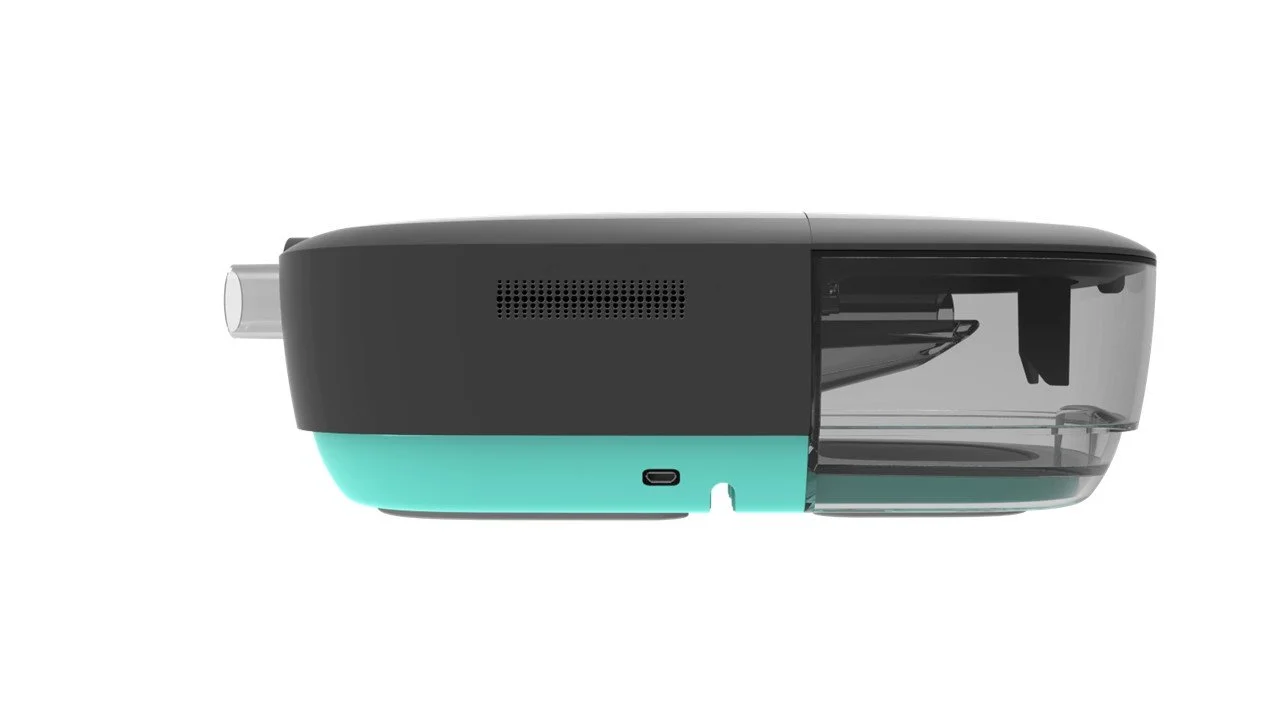
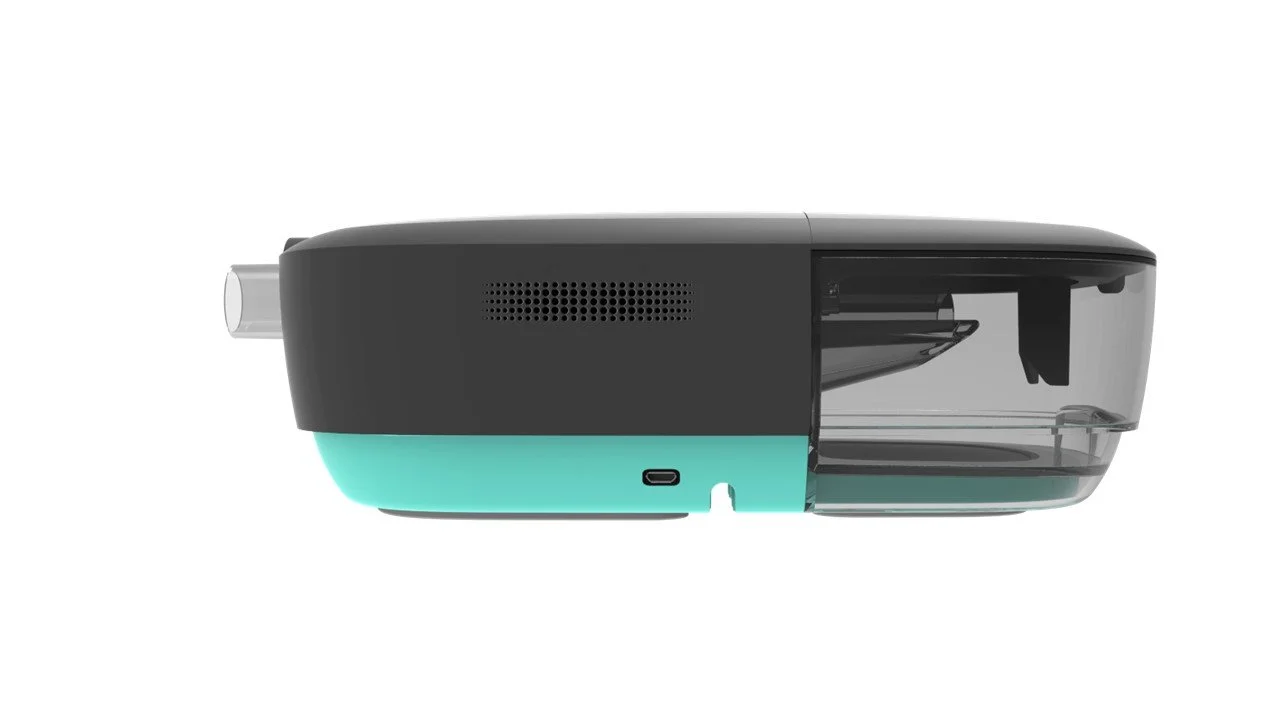
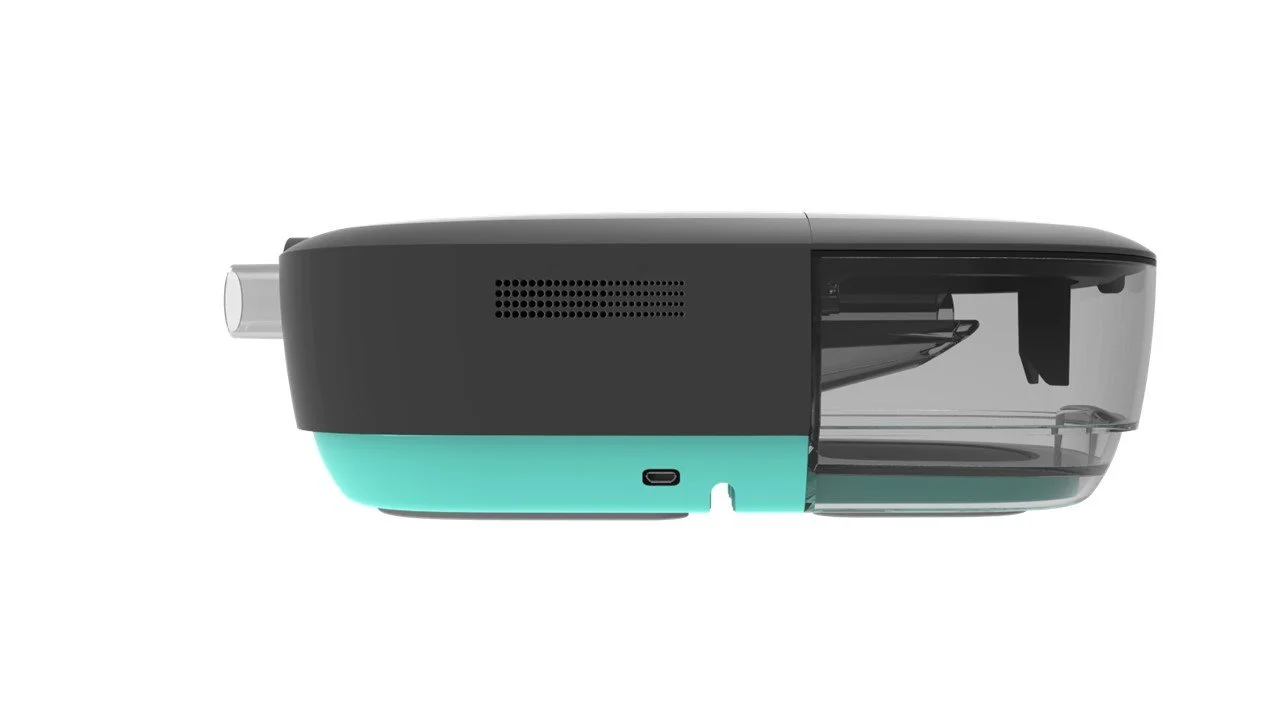
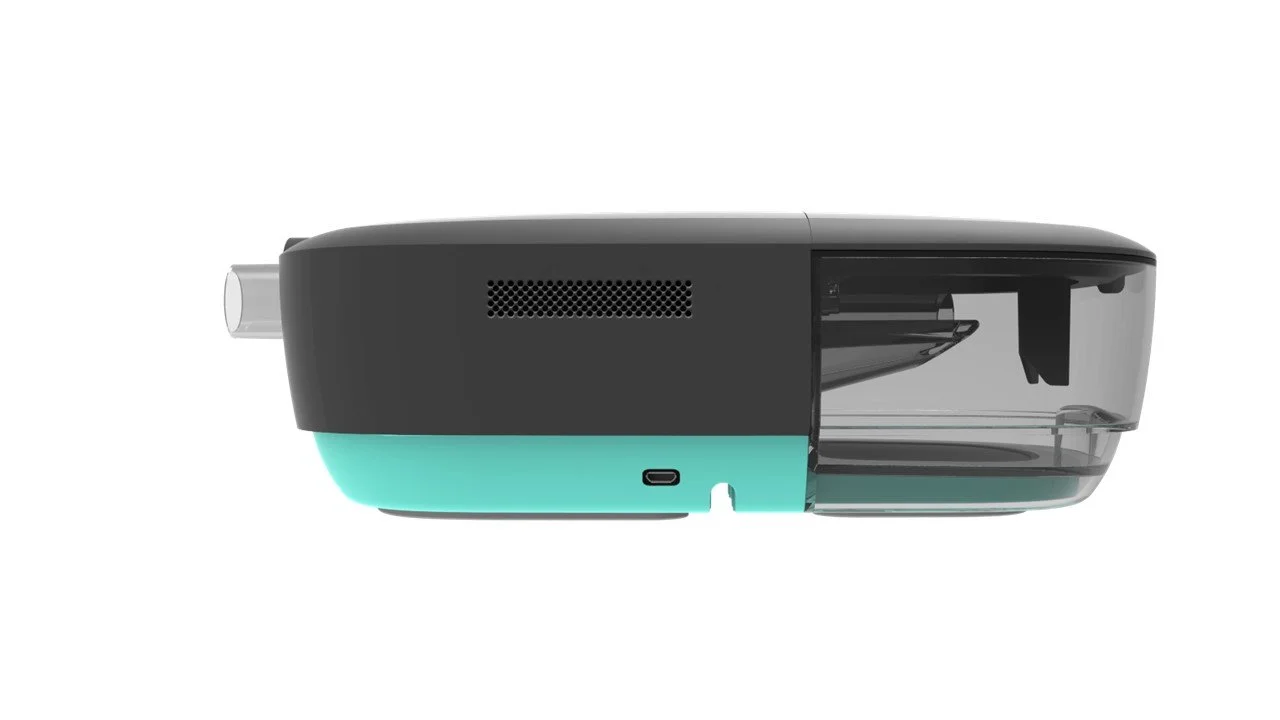
Tank Tint
During this exploration I looked at the humidifier tank and what sort of textures/ tints were possible. Some key considerations were:
Hiding internal complexity
Waterline visibility
Cohesiveness of the design
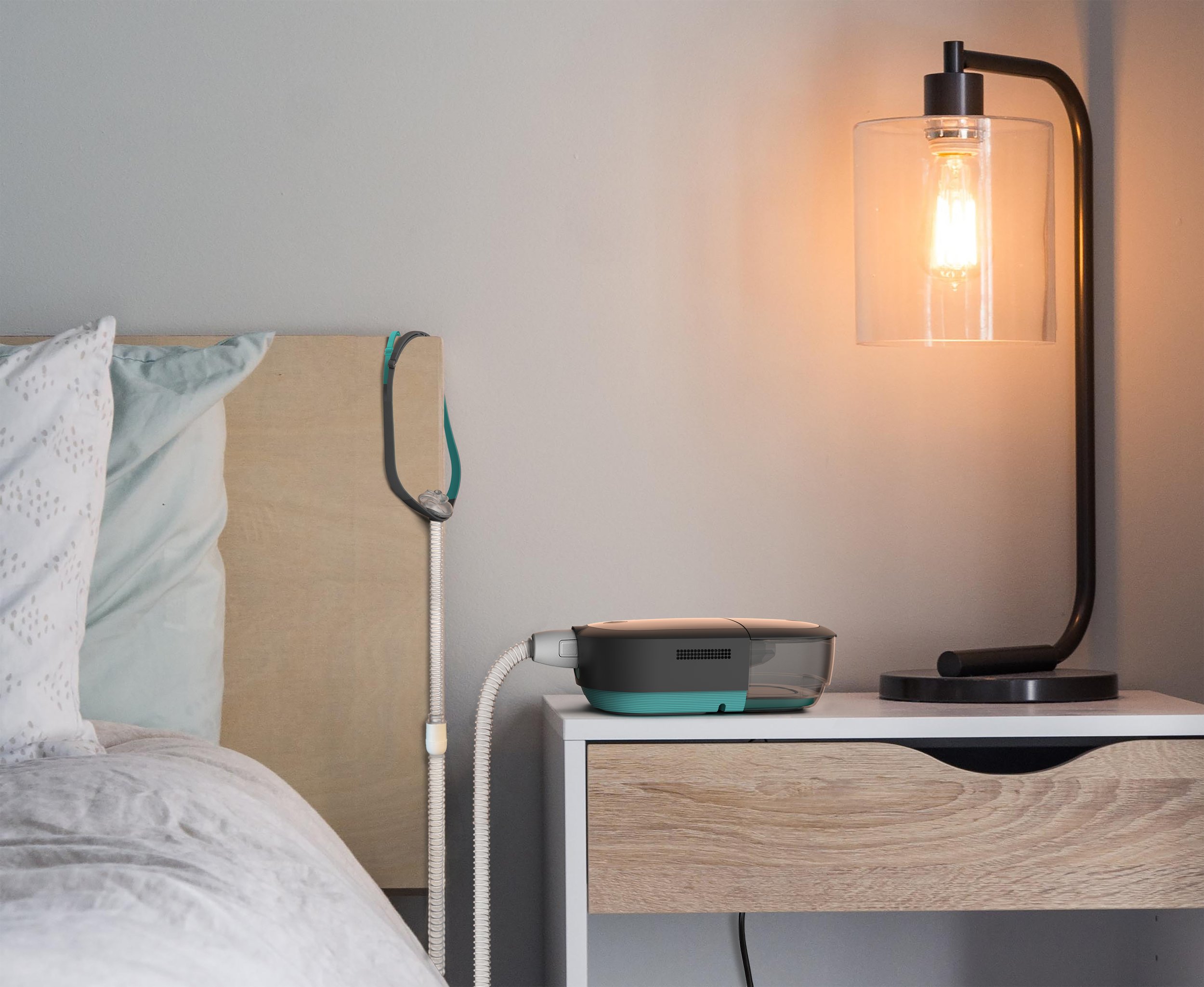
Sustainability
Sustainability
Through a simplified design and close collaboration with our engineering team, we were able to drastically reduce the number of parts from its predecessor DreamStation 1. This lead to a number of benefits including a significantly simplified assembly process, huge cost savings and ultimately less product waste!
Sustainability Wins:
Assembly steps cut in half
50% reduced number of molded parts
Number of screws reduced to 13 from 80
Increased use of mono materials
Reduced power consumption
DreamStation 1 (OLD)
DreamStation 2 (NEW)

Bringing it Together
Design Refinement
Aim:
Develop a cost competitive cpap platform that is scalable and can accomodate a variety of users and use cases both today and in the future.
What we learnt to inform our selection:
To satisfy the differing needs of DMEs (Durable Medical Equipment) and their workflows while providing a positive experience for users we needed to go beyond the 'box' to craft a compelling experience. Through our research we discovered that simplicity, flexibility, consistency, and transparency, were all key factors in creating a seamless platform.
Wins:
De-stigmatized the Experience
50% Reduction of Parts
Philips First Attempt at App Integration in the CPAP Space
Simplified the Experience
Streamlined Product Assembly
Developed Philip’s First CPAP Platform


